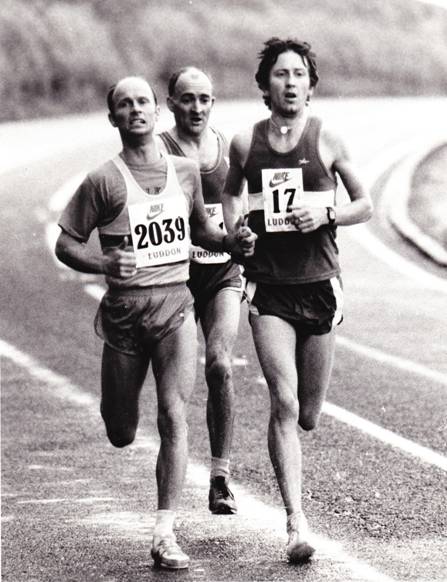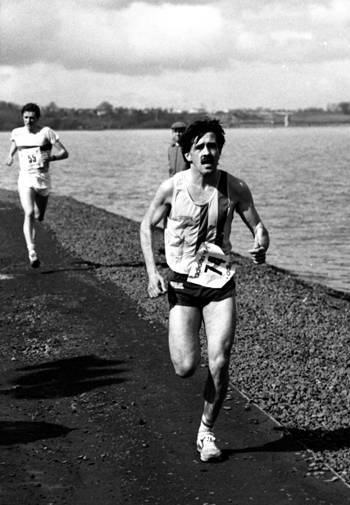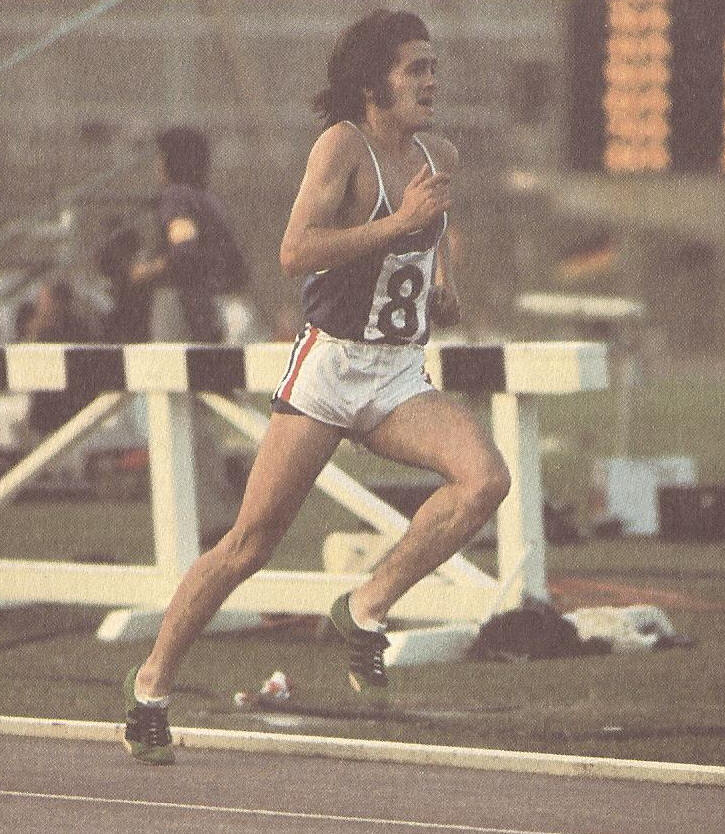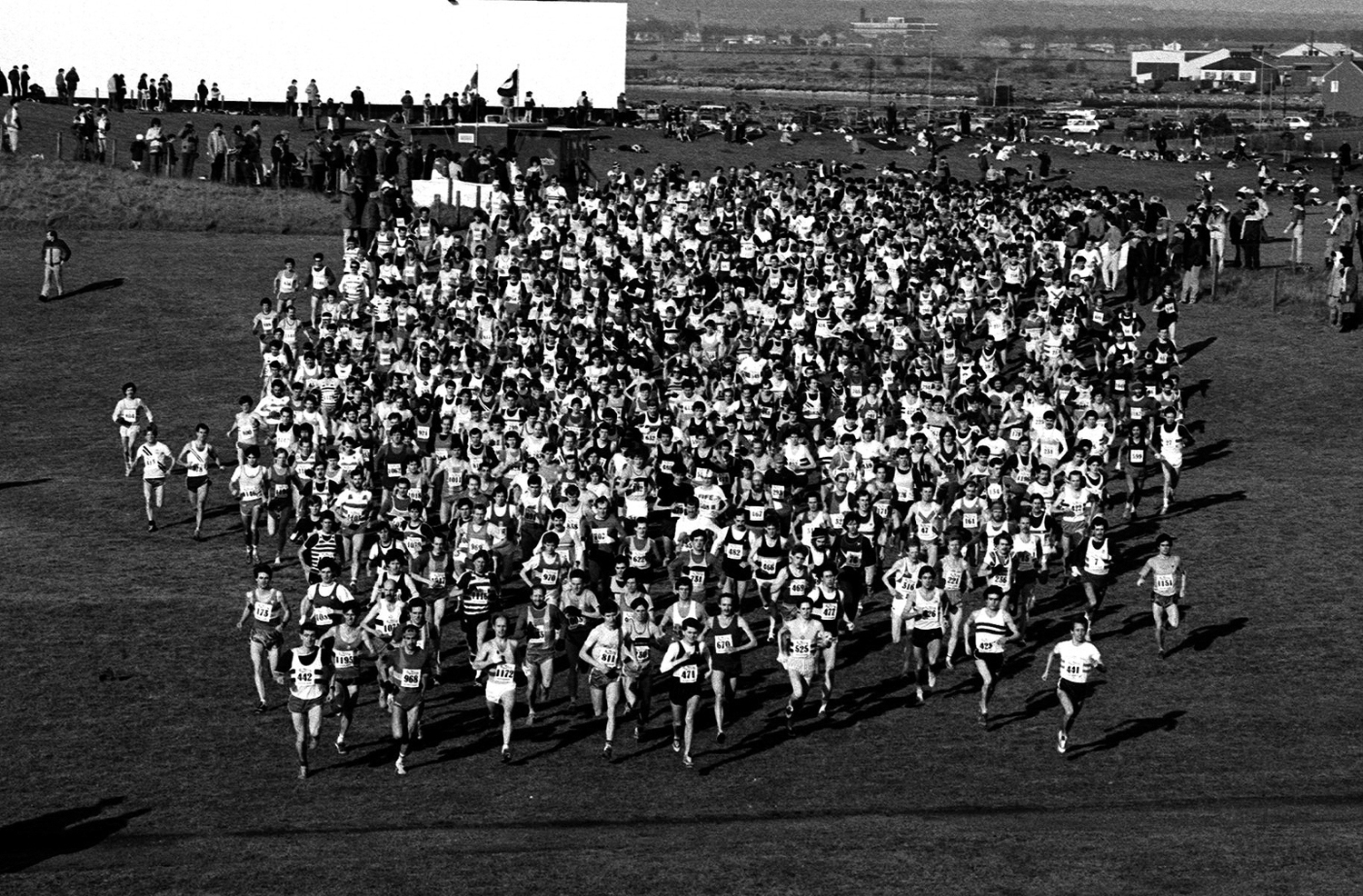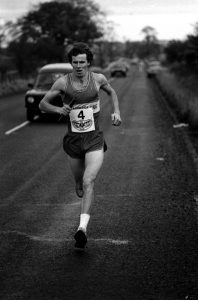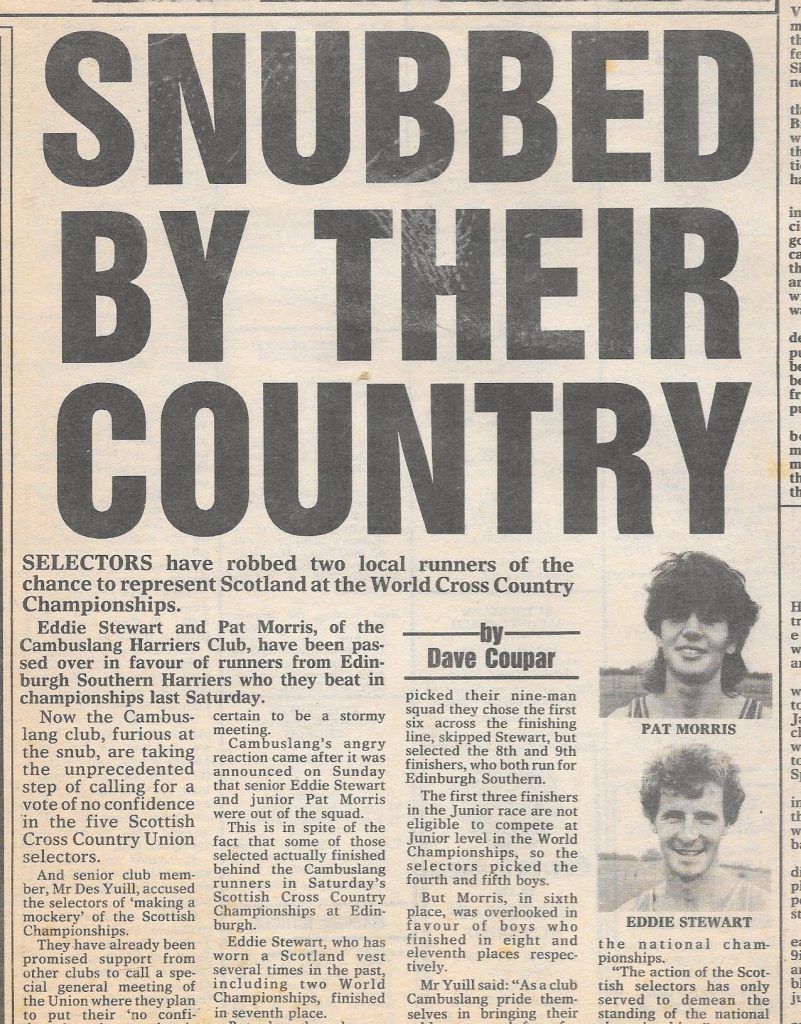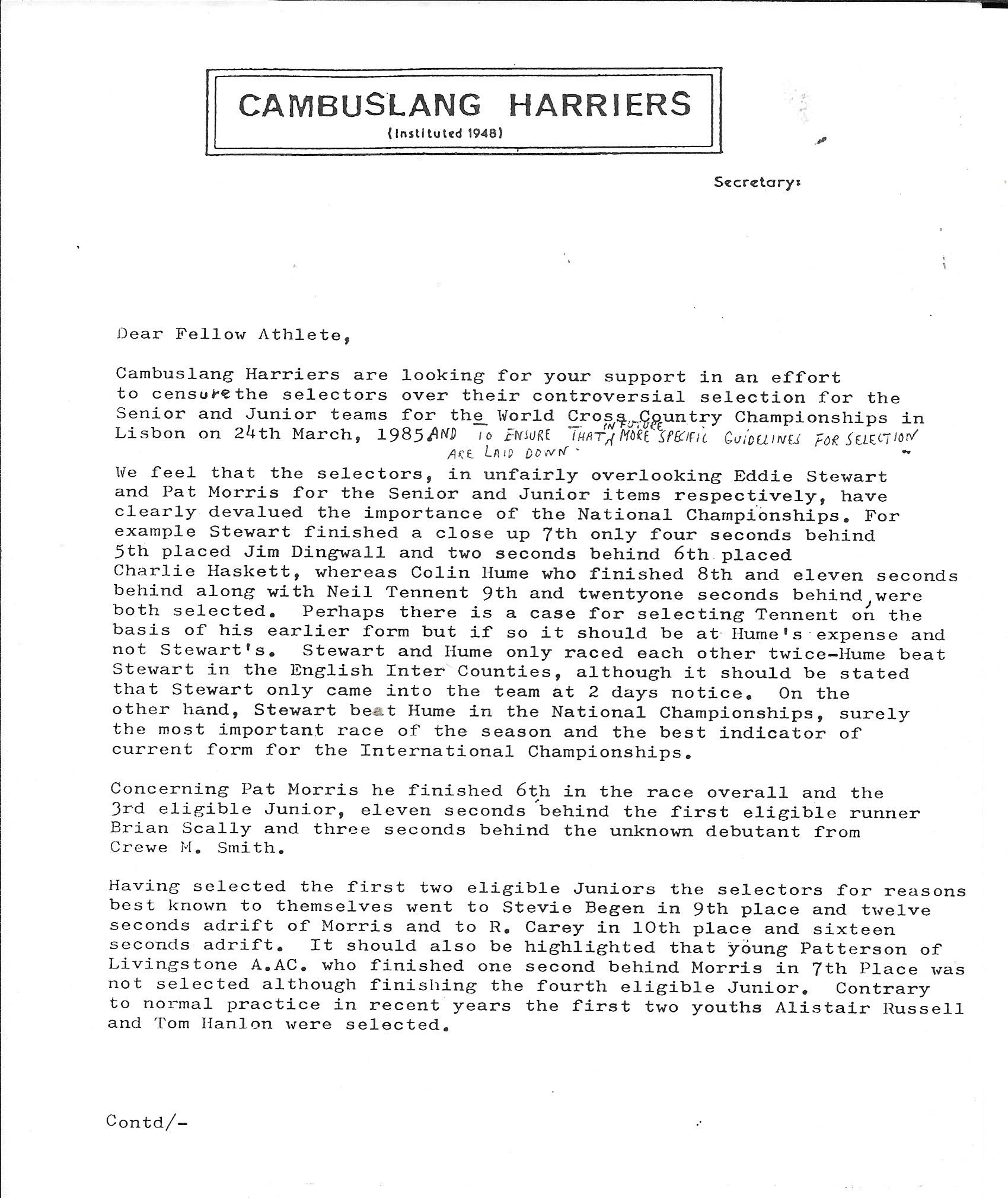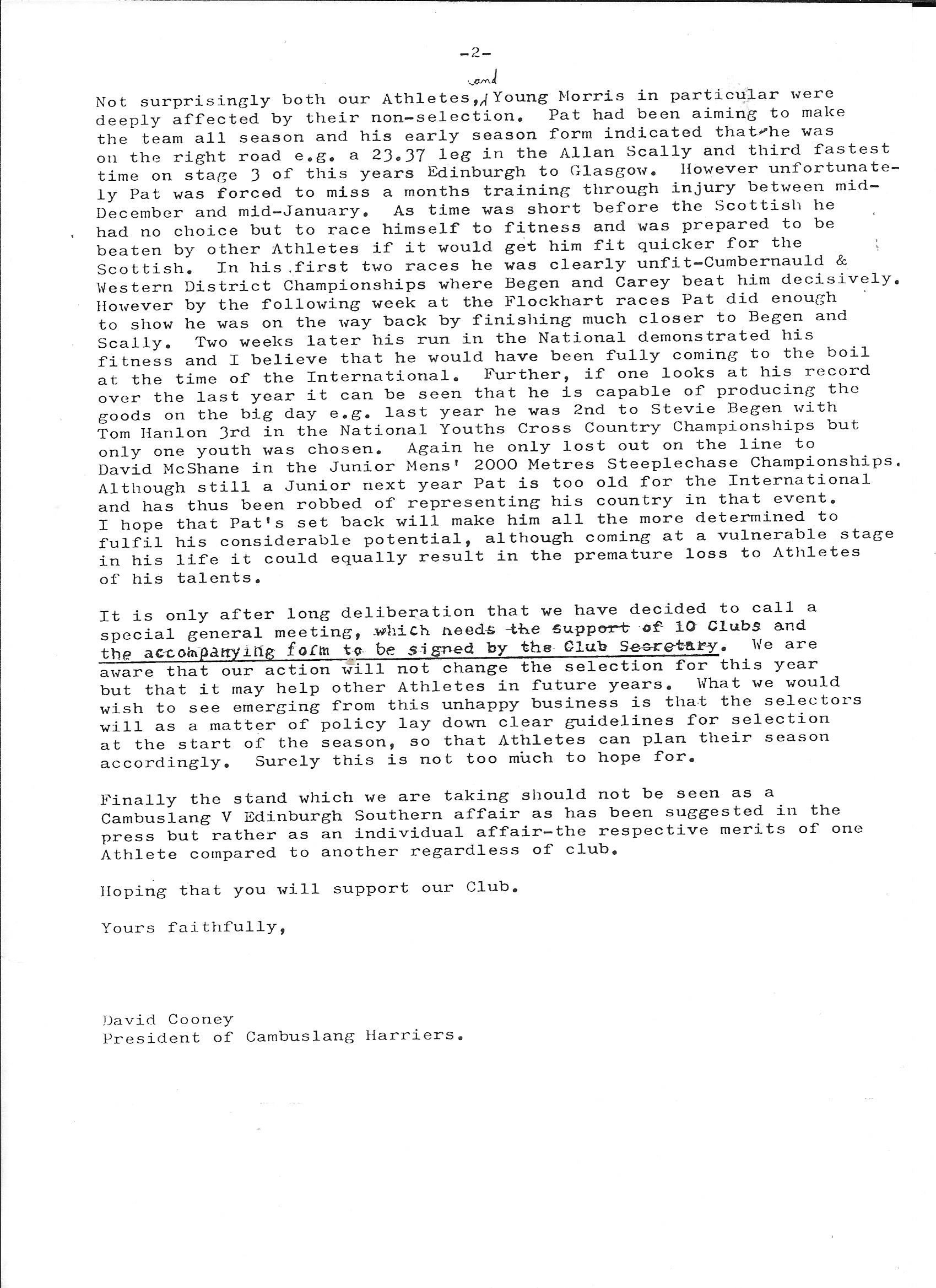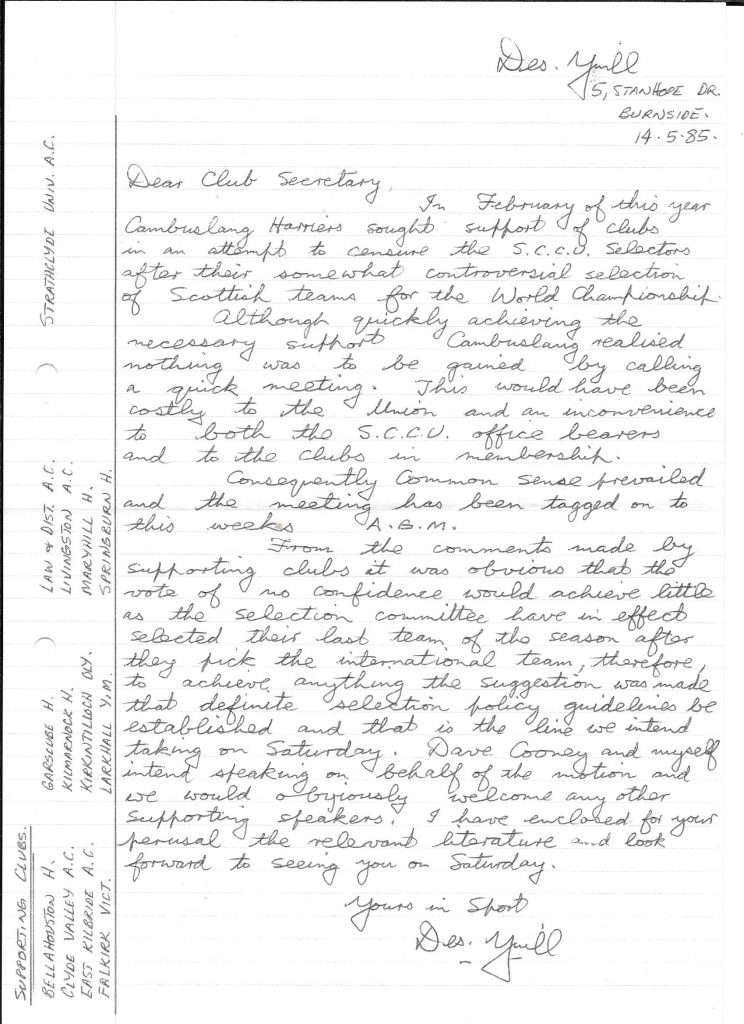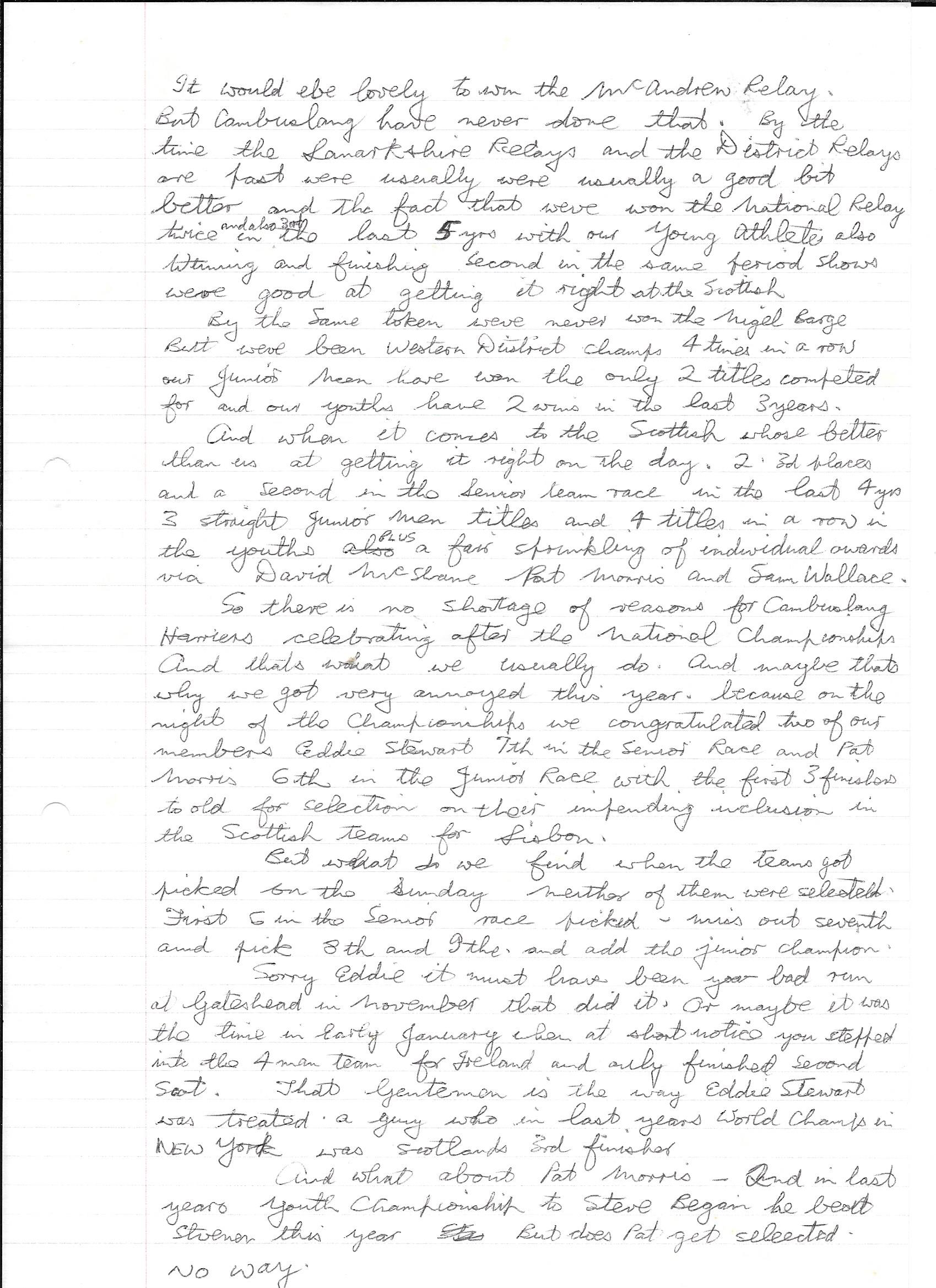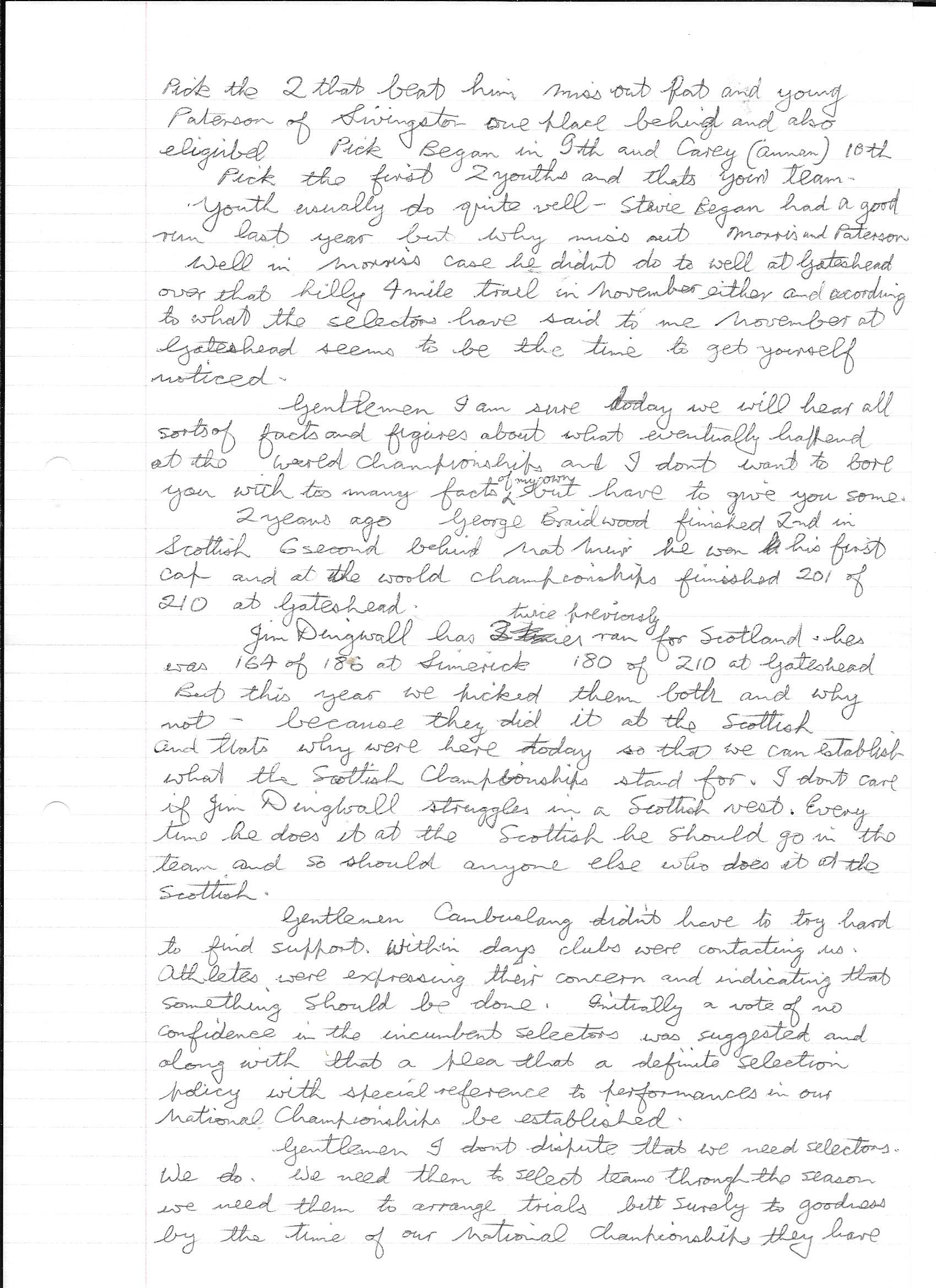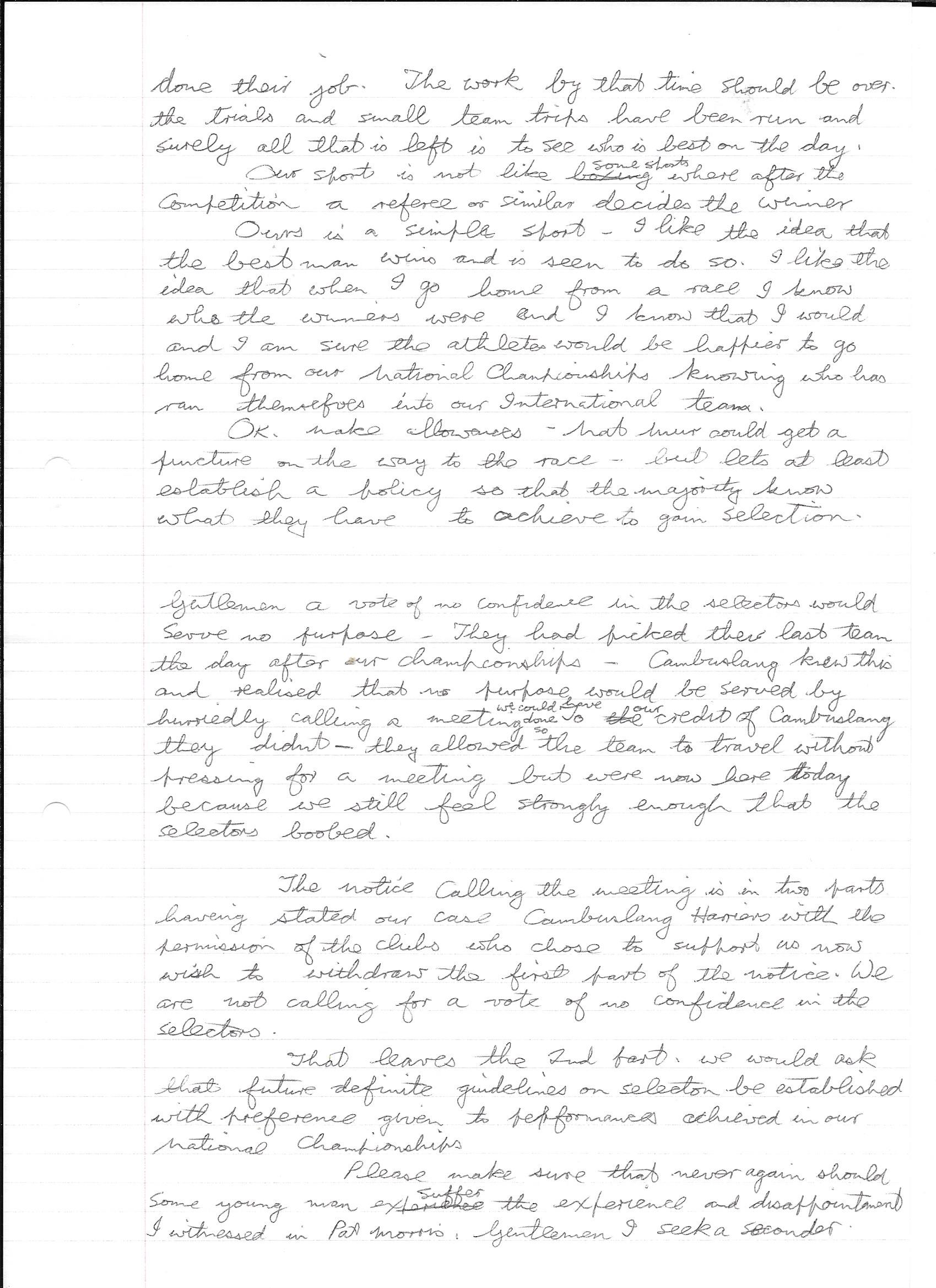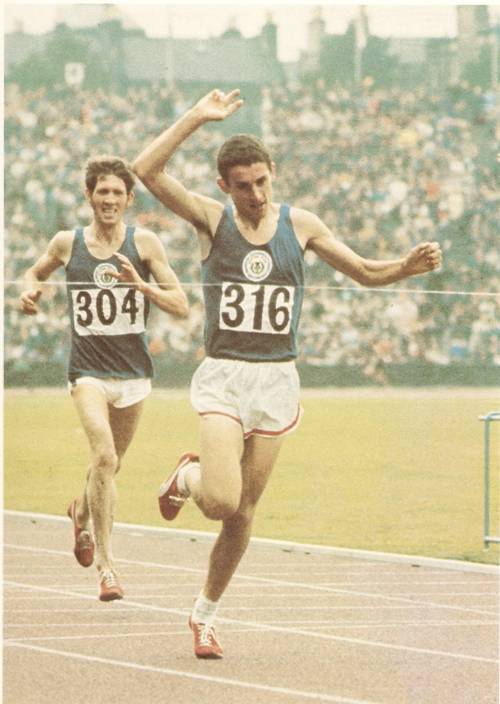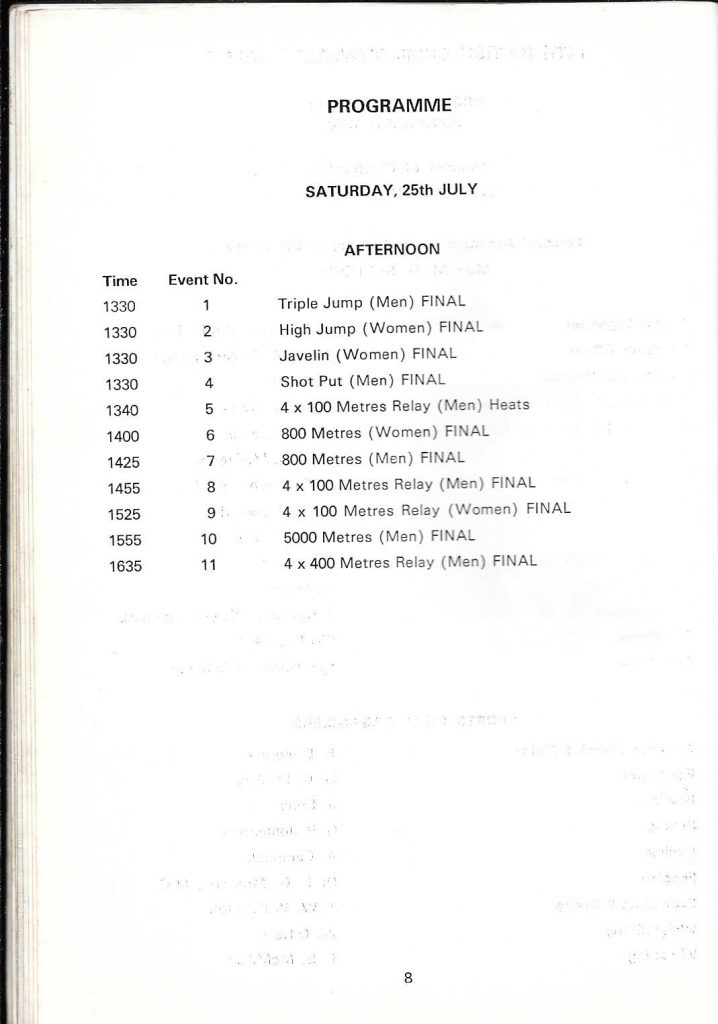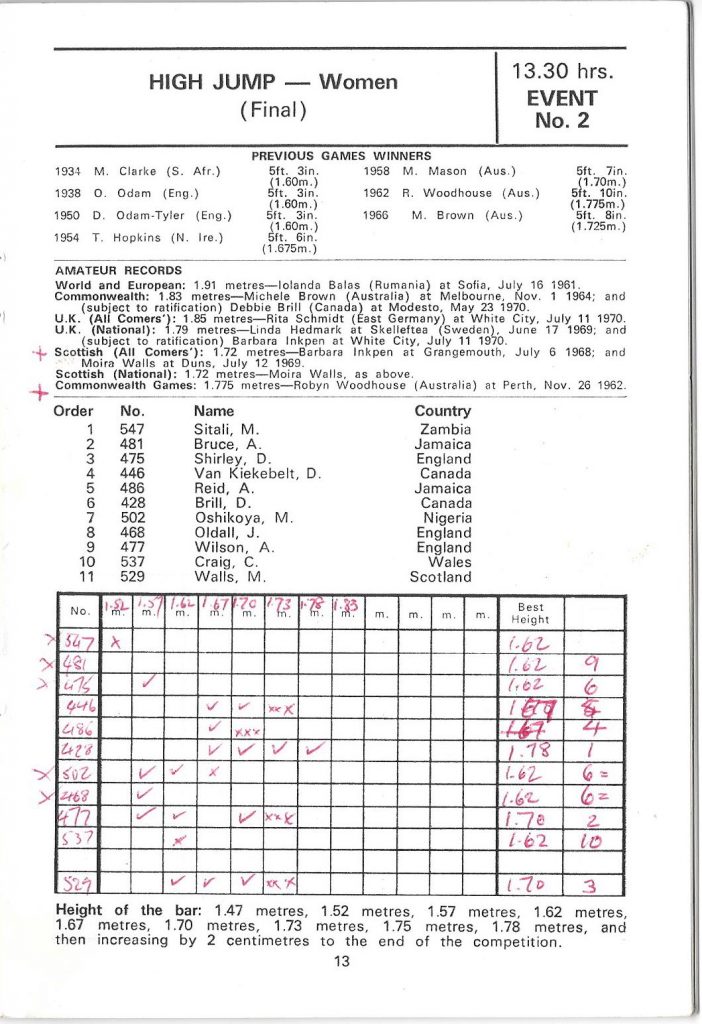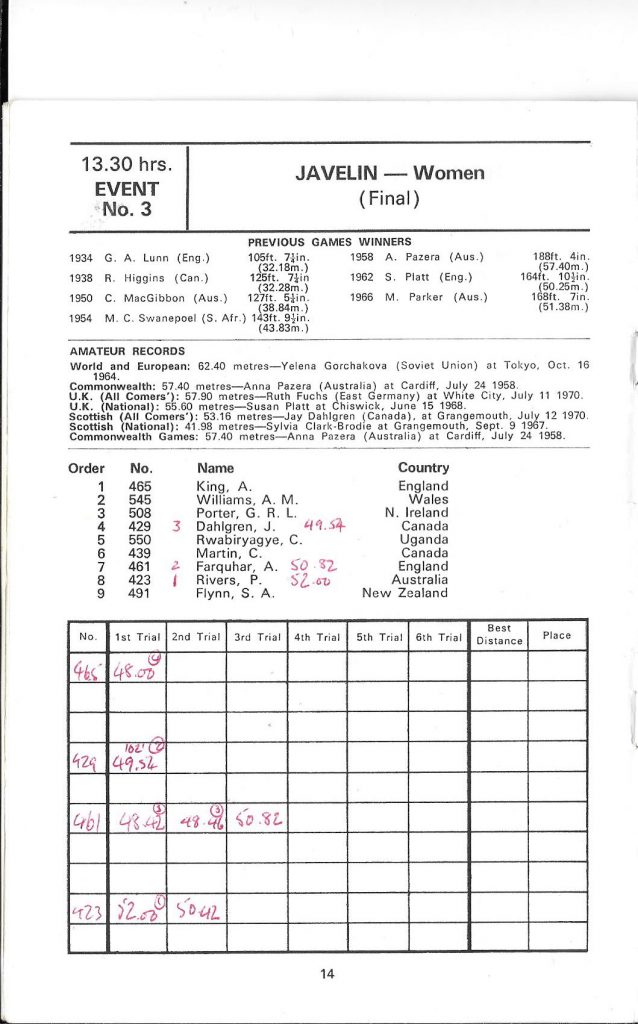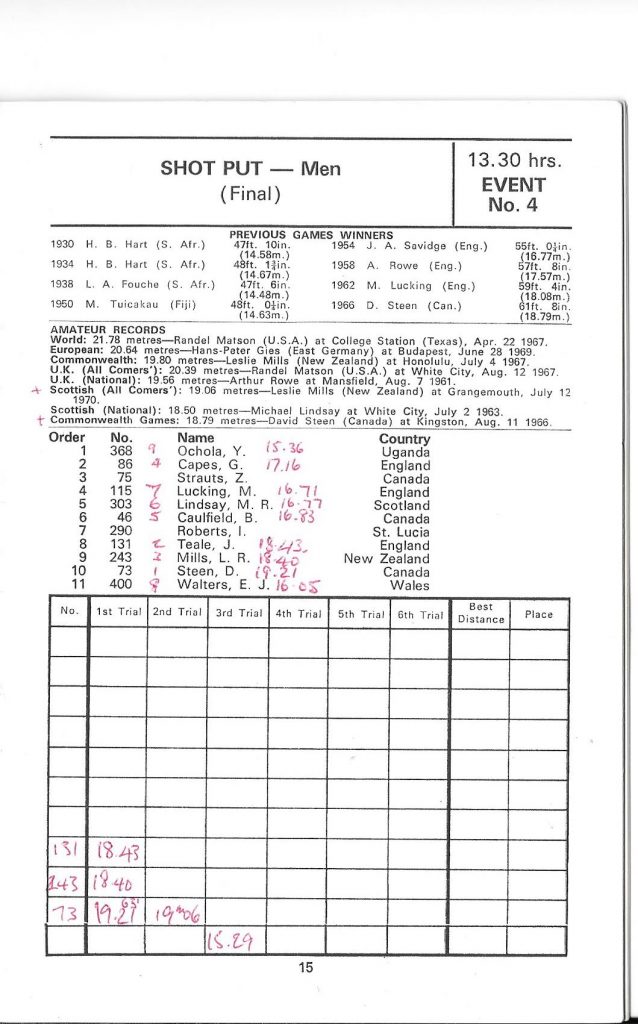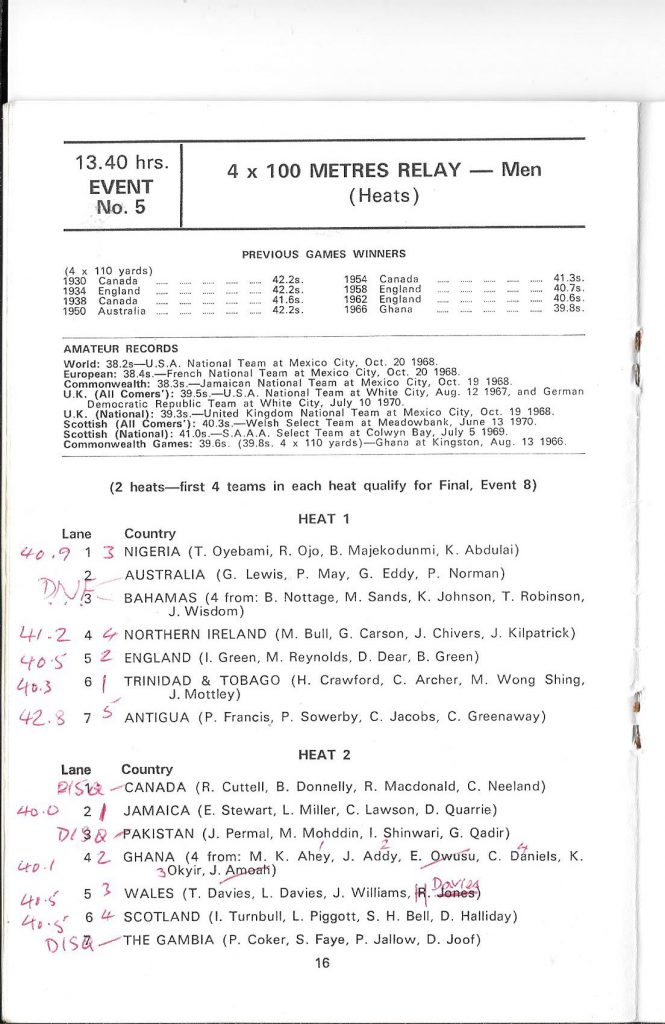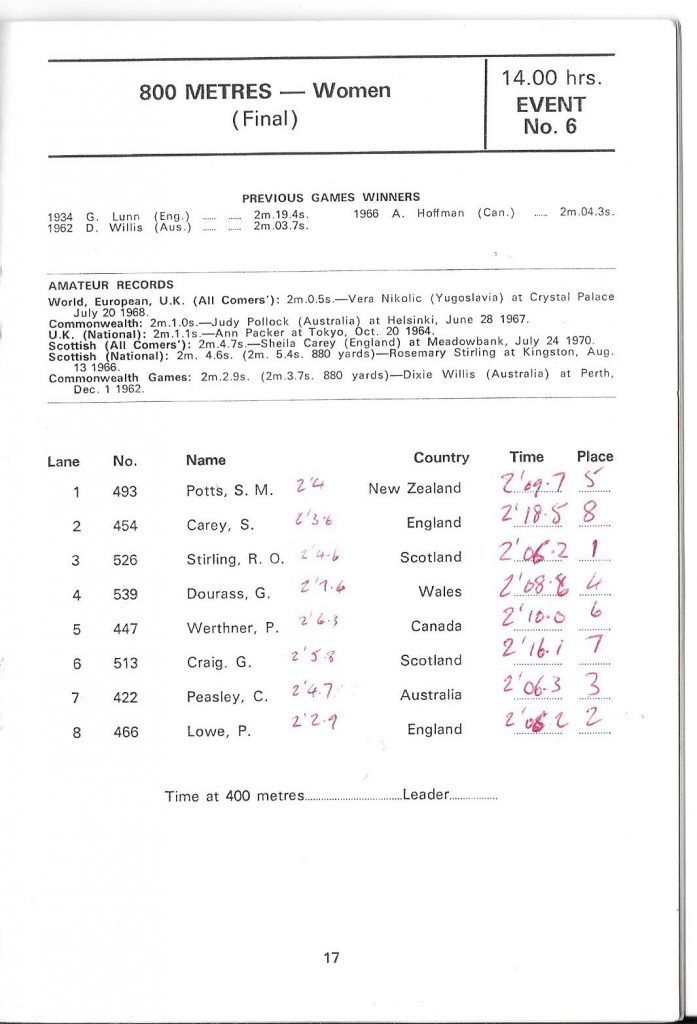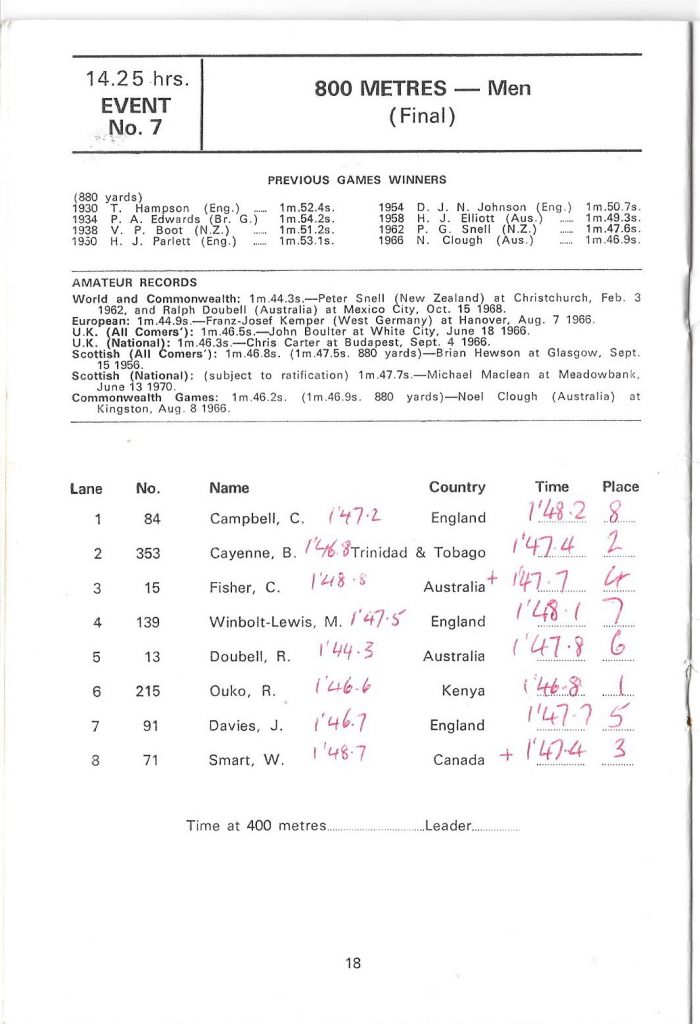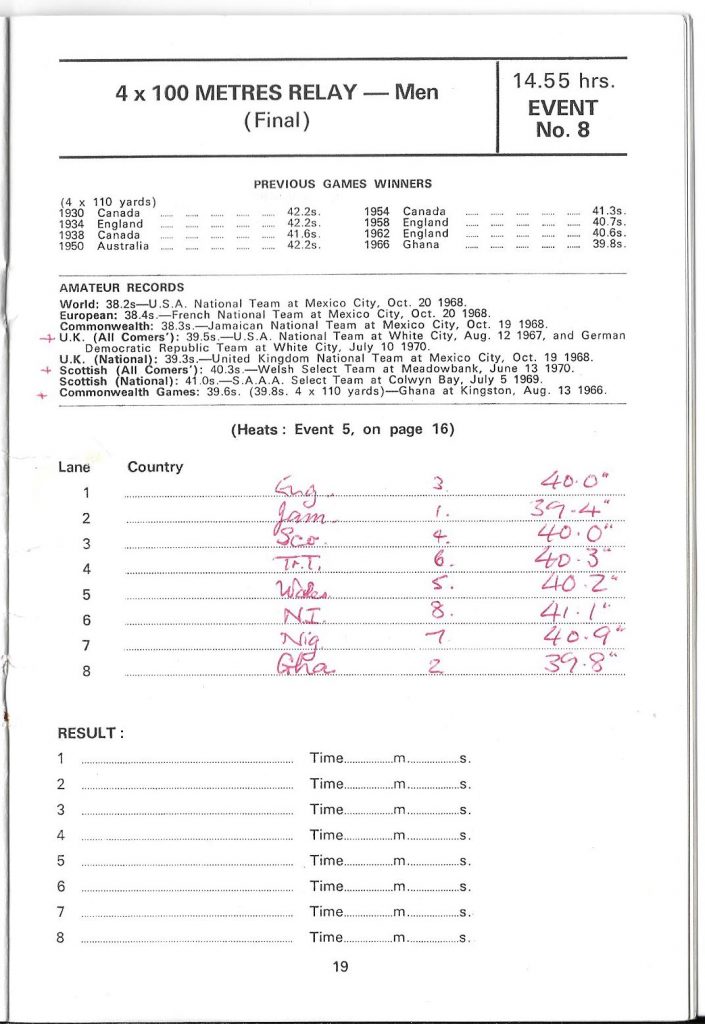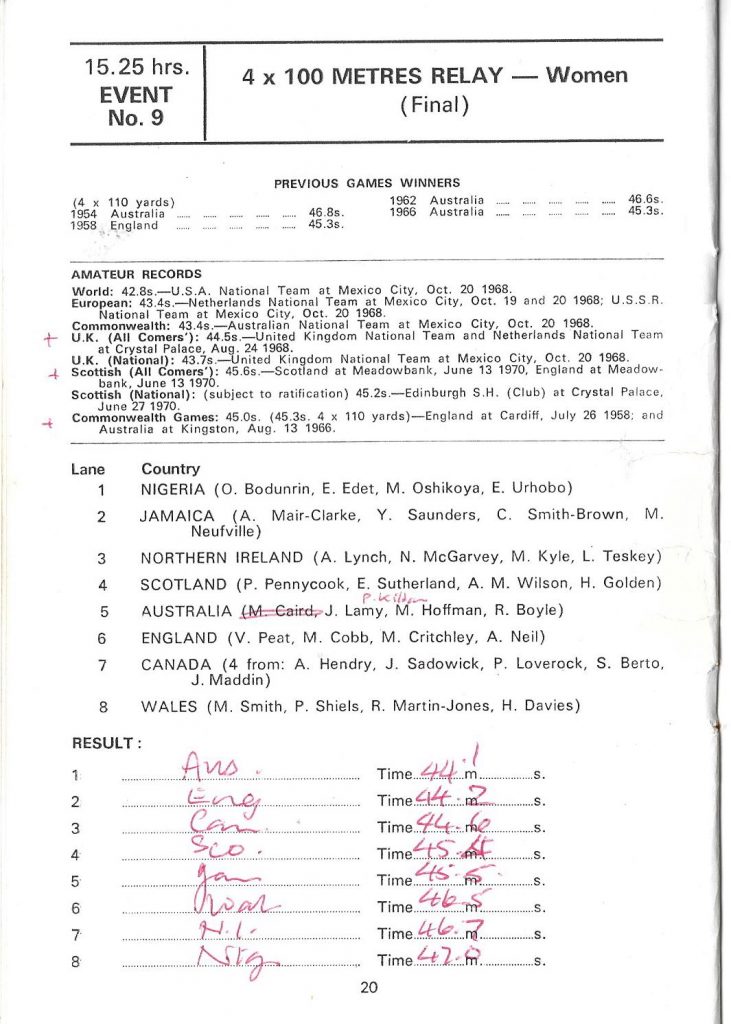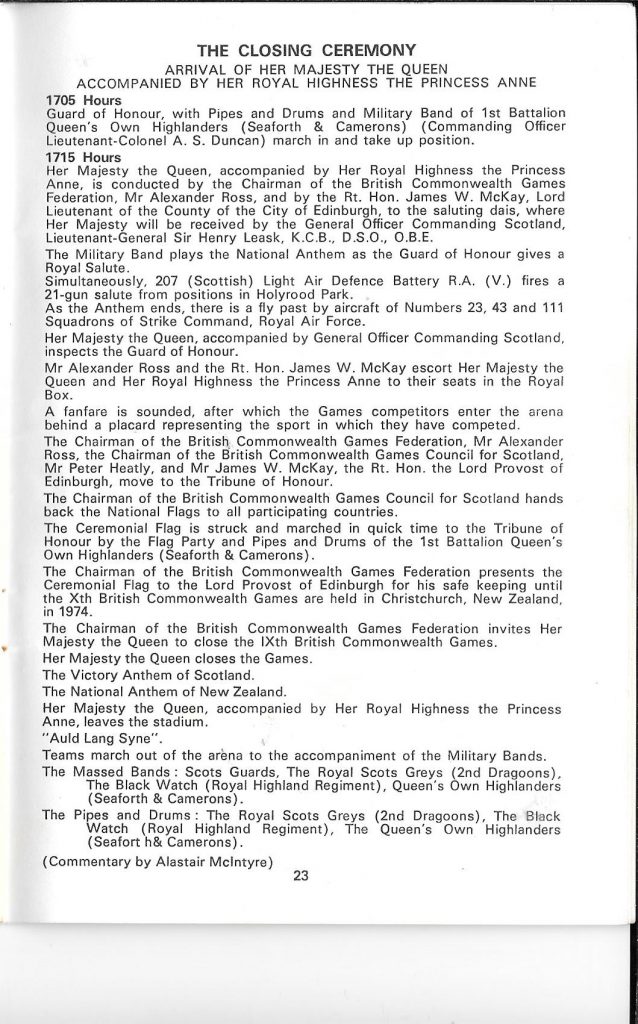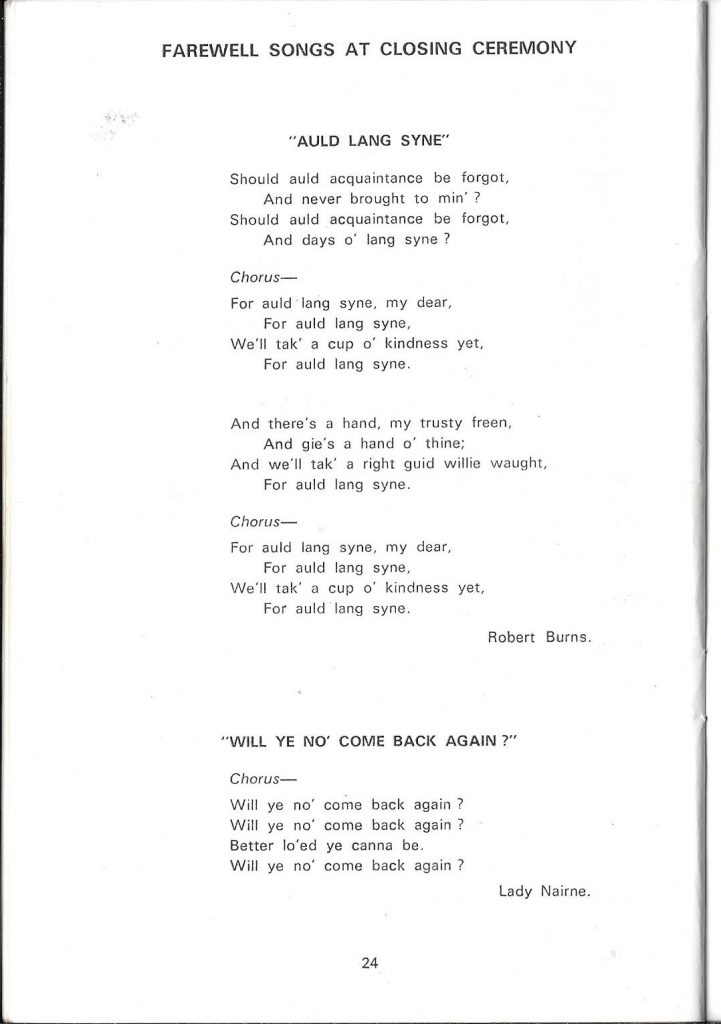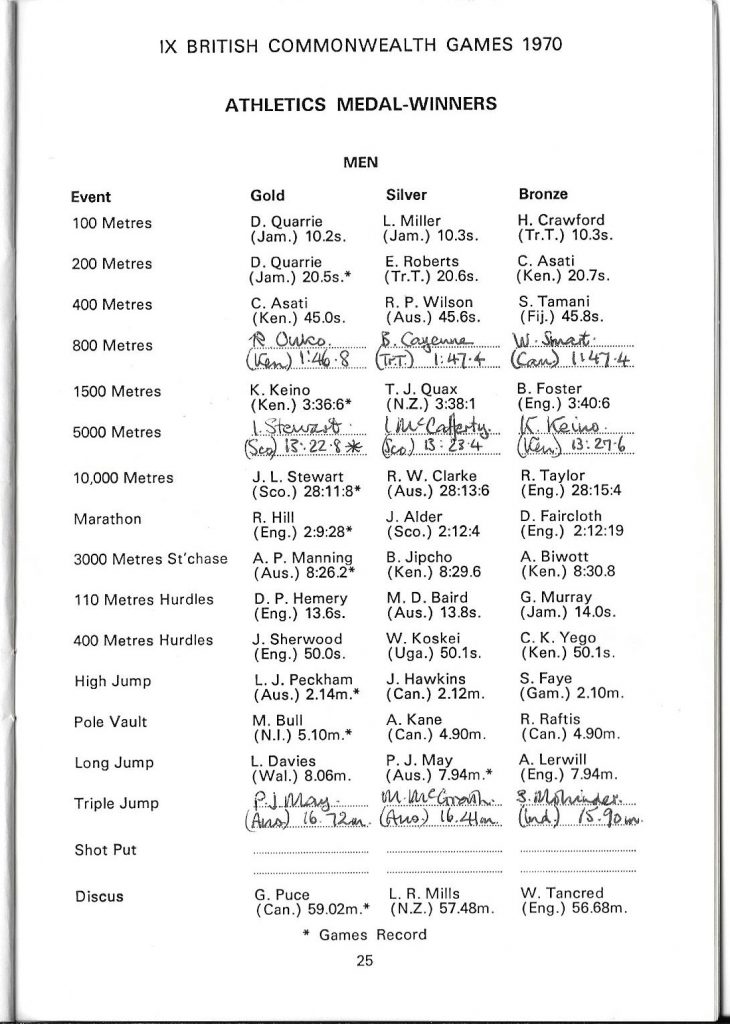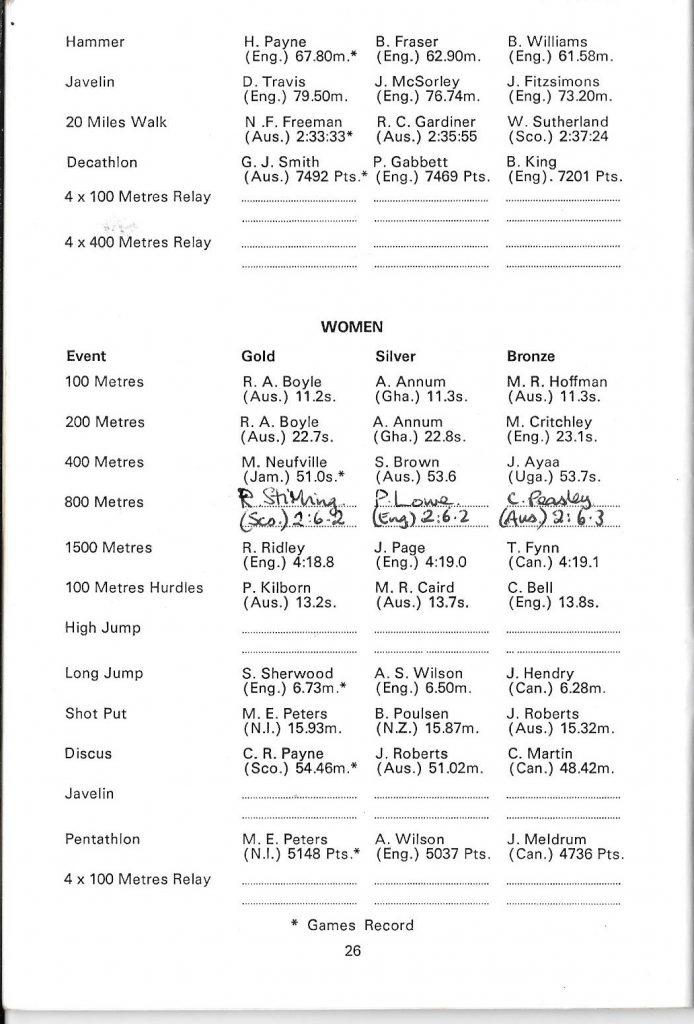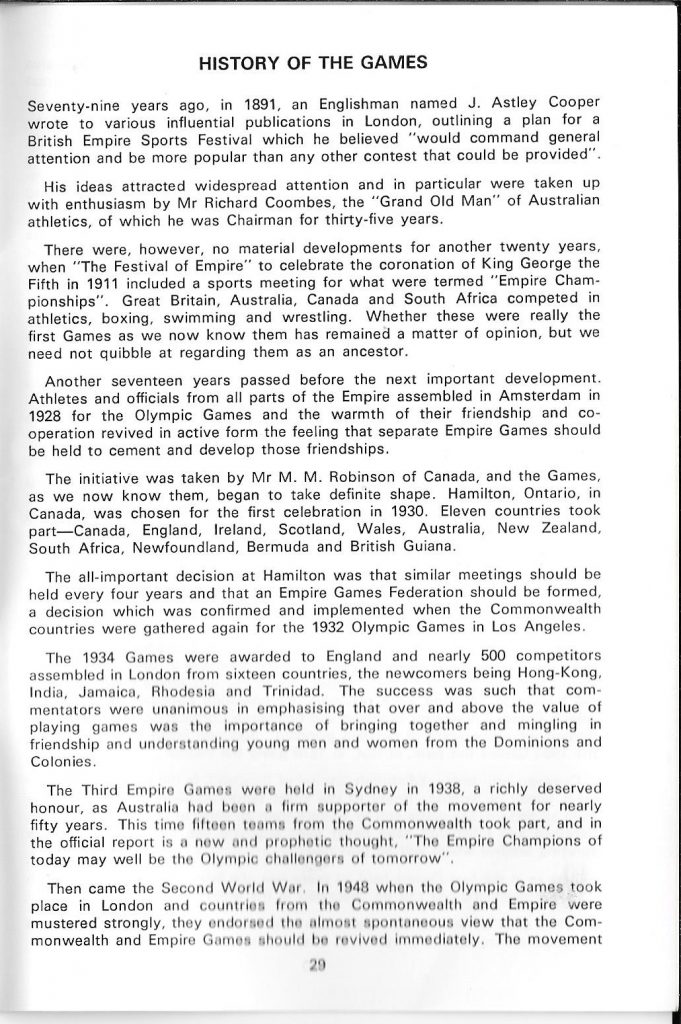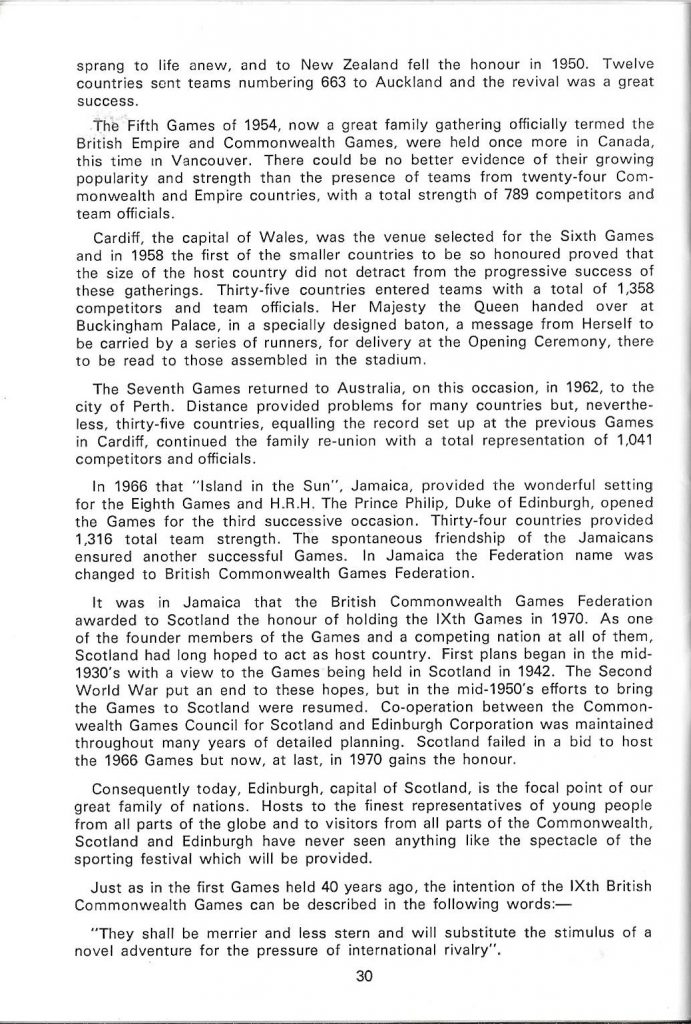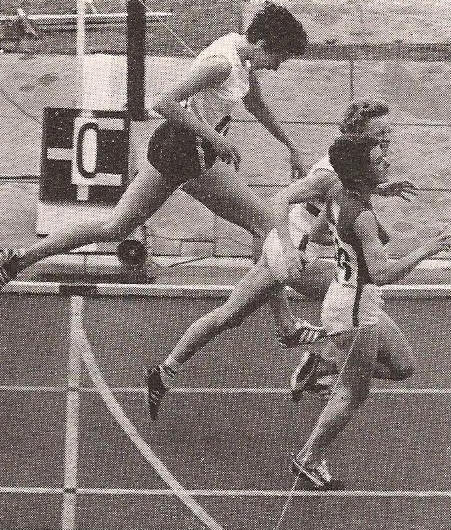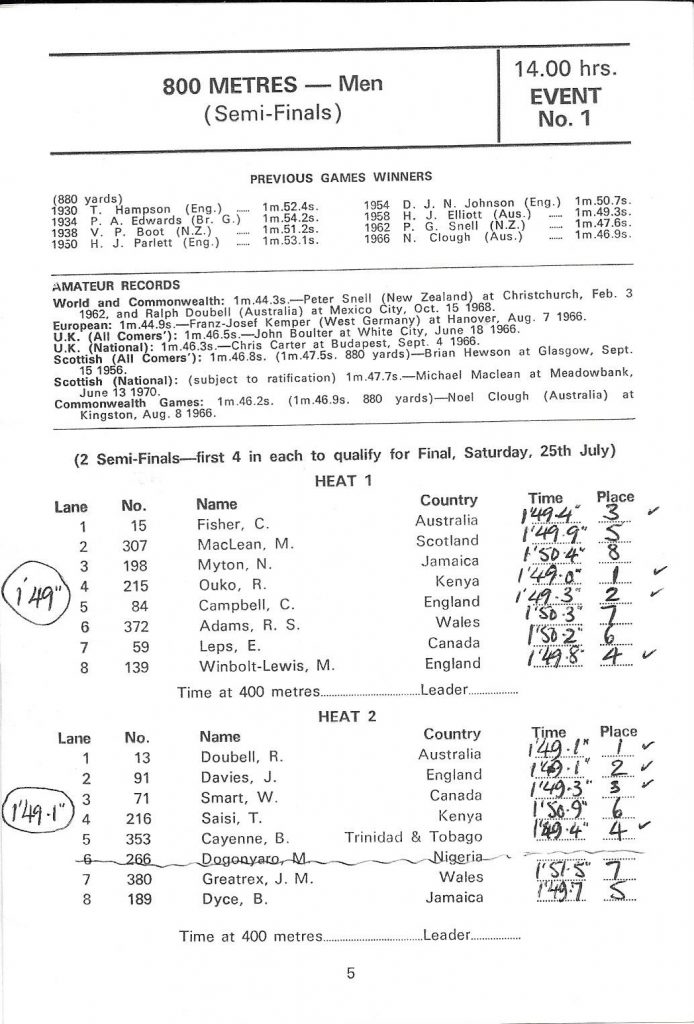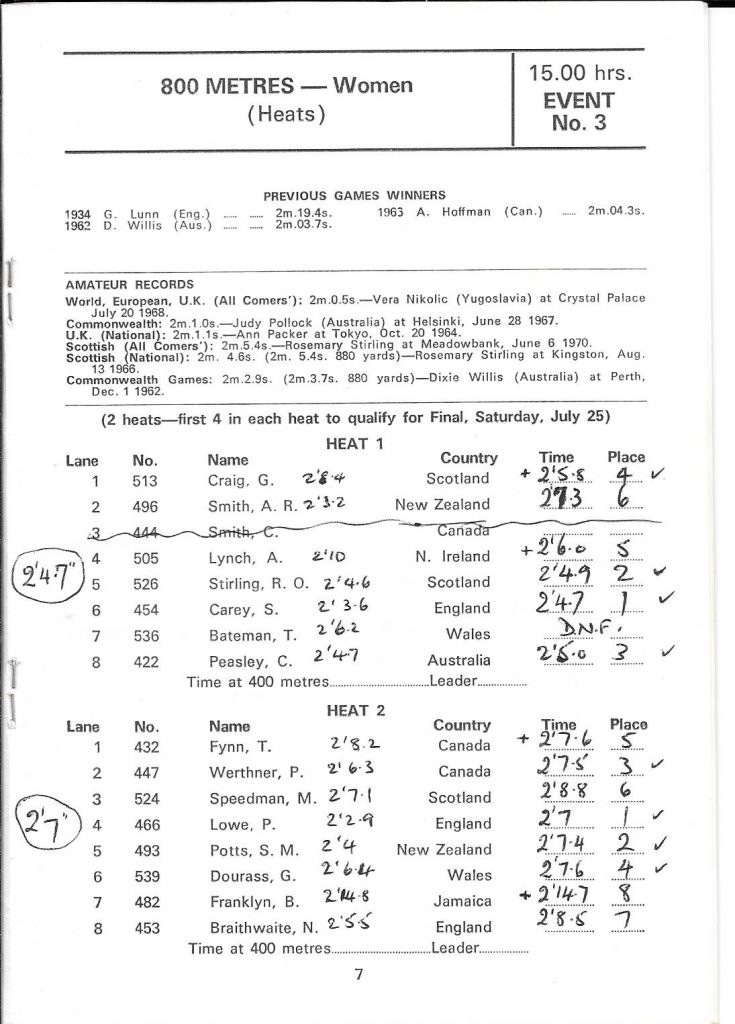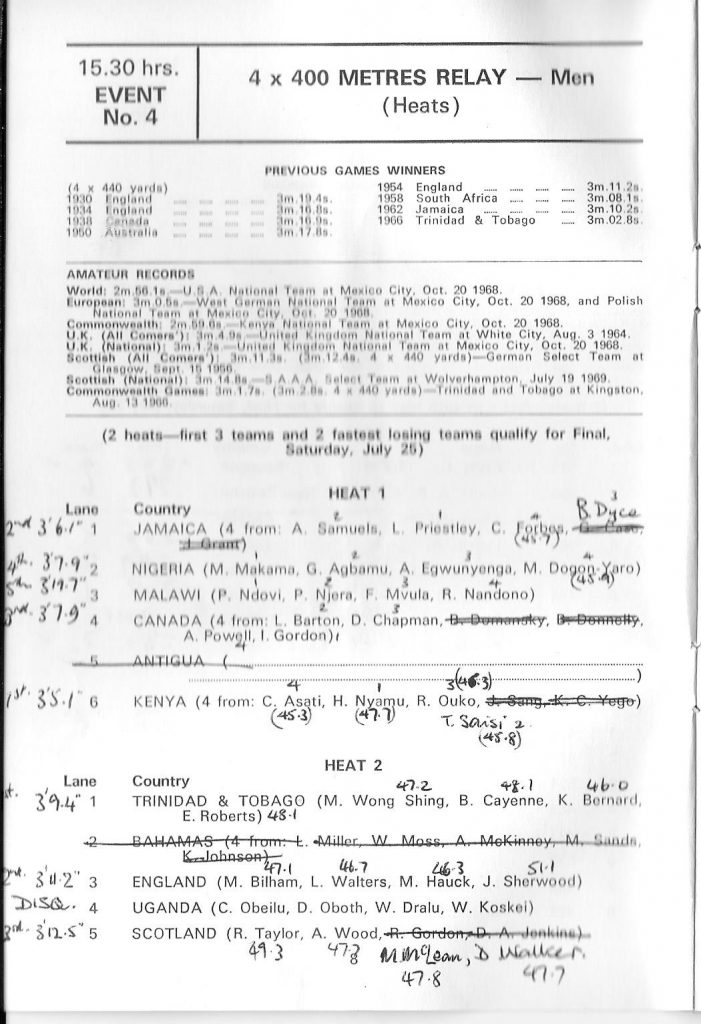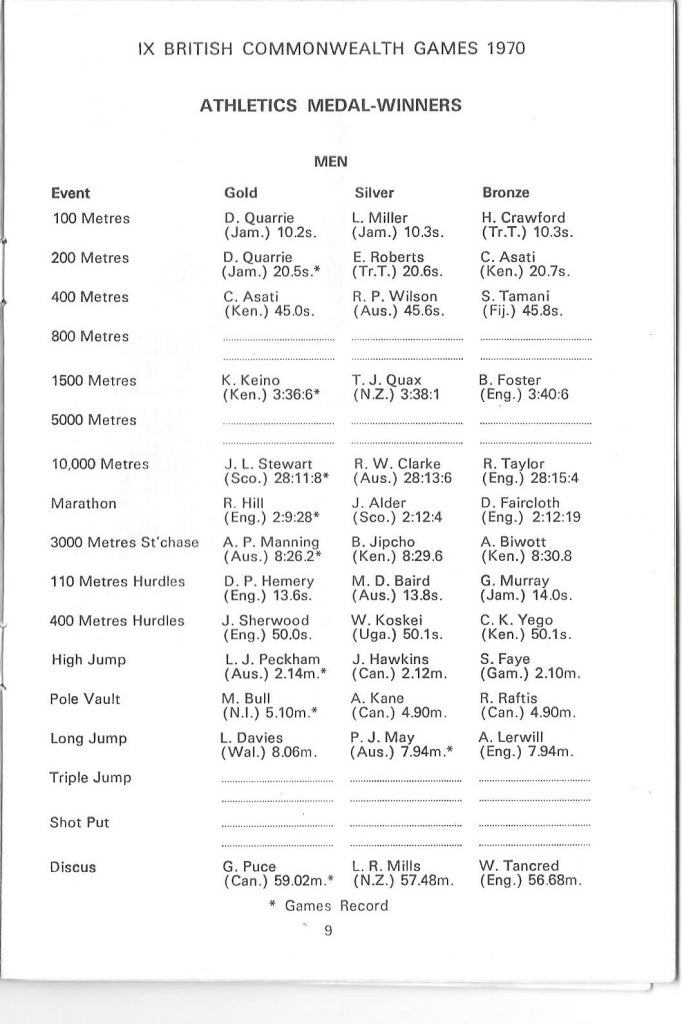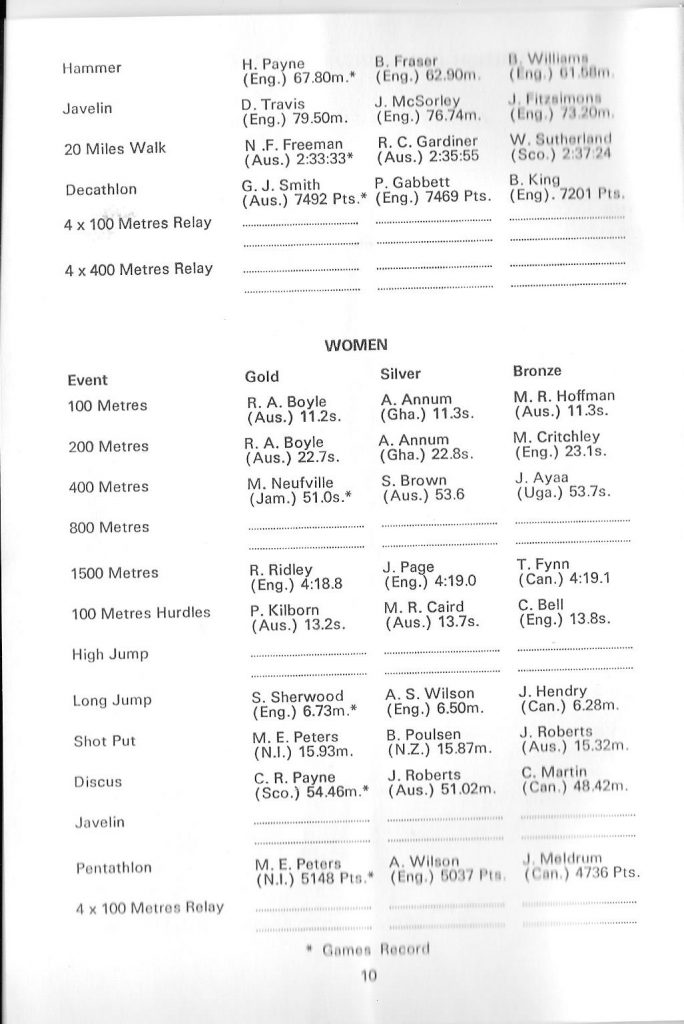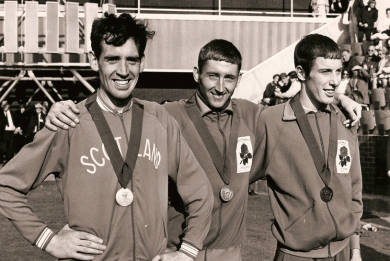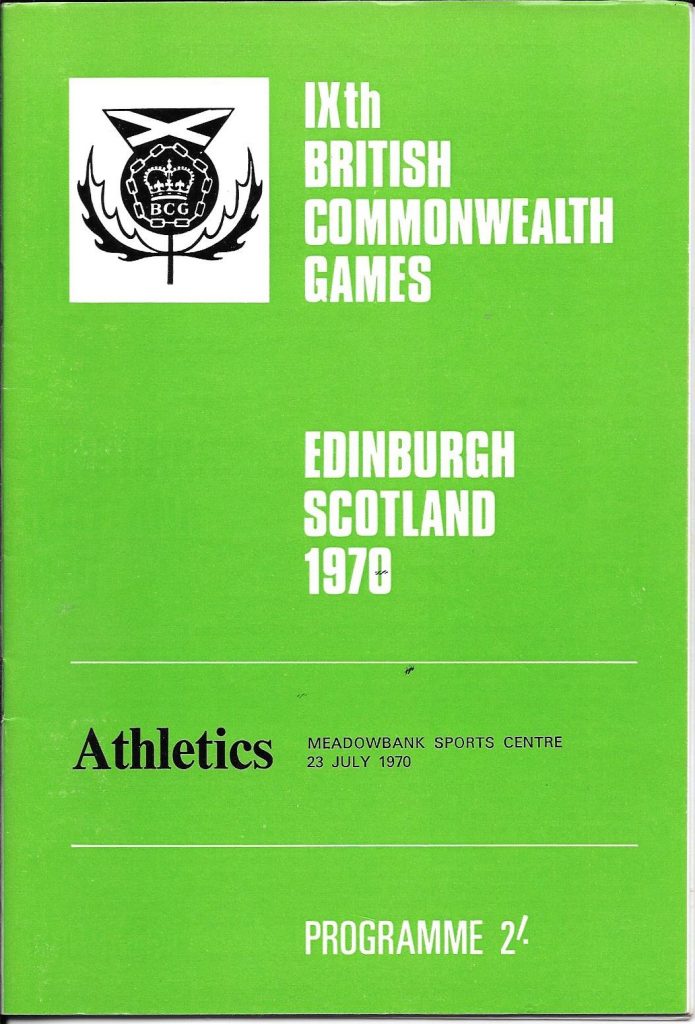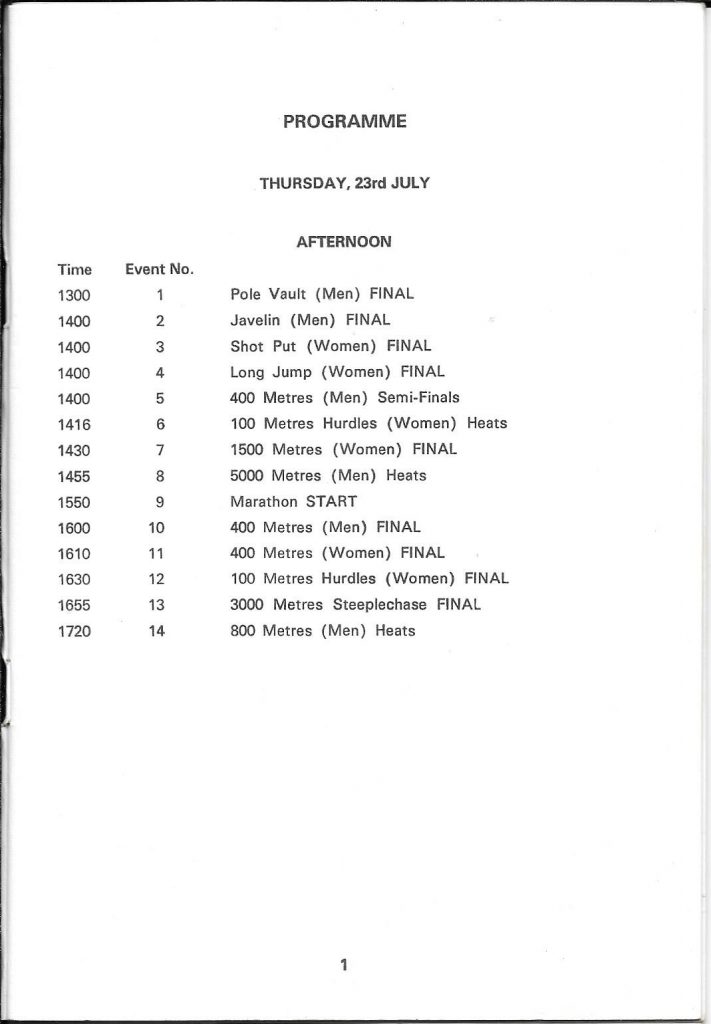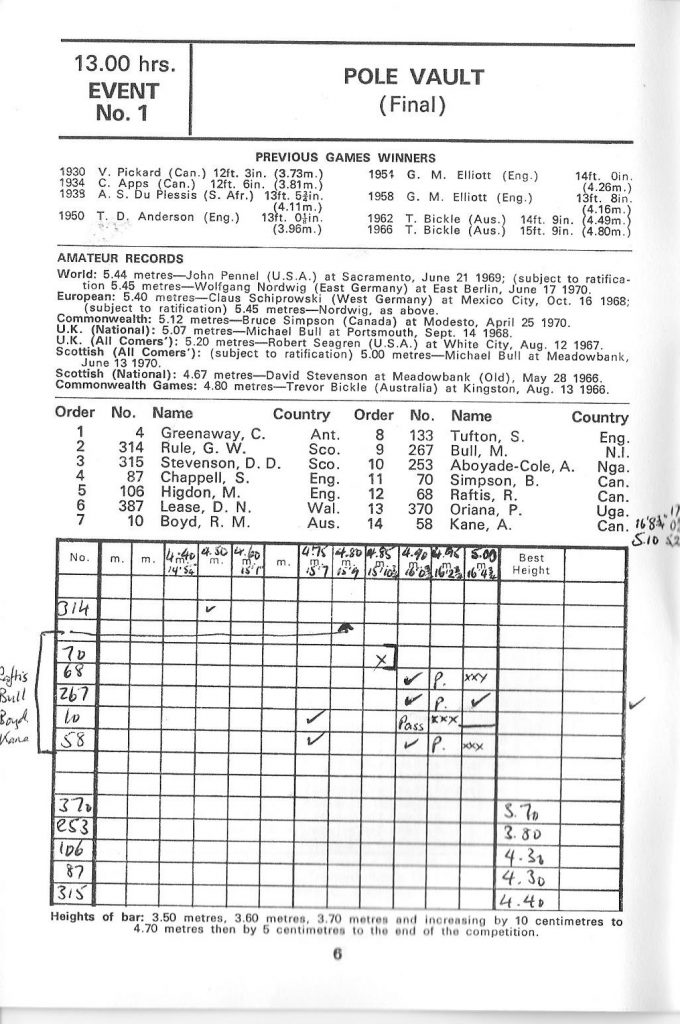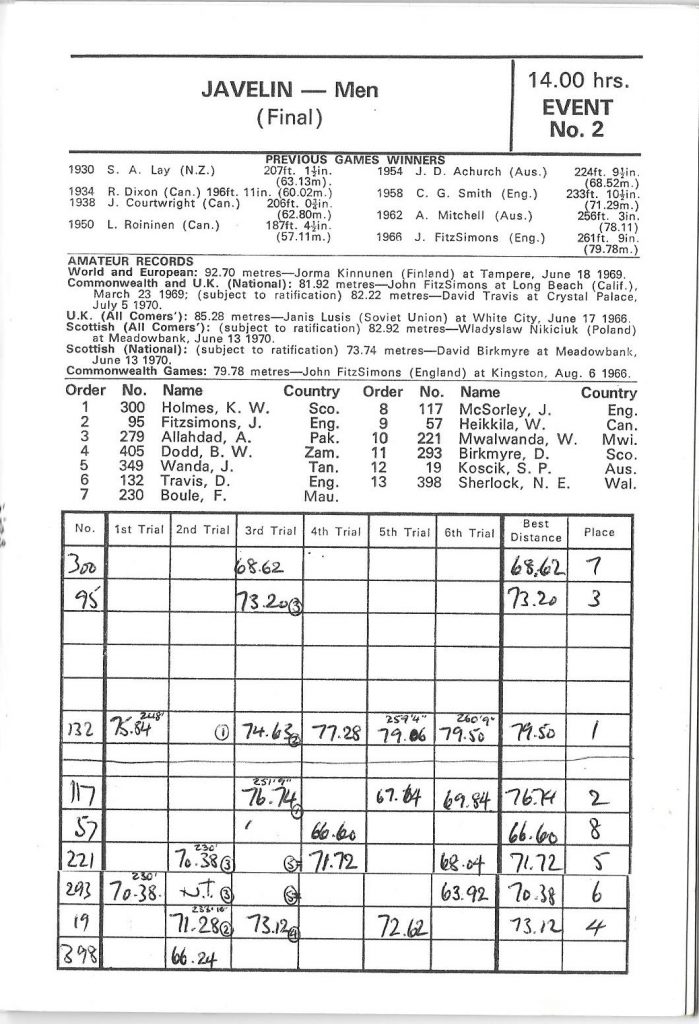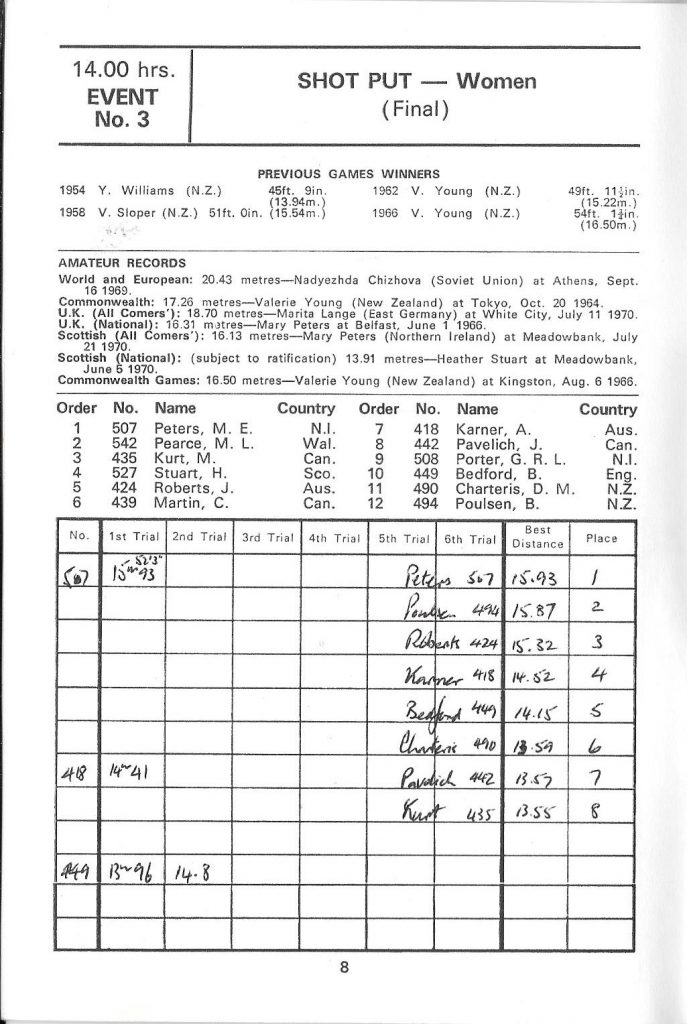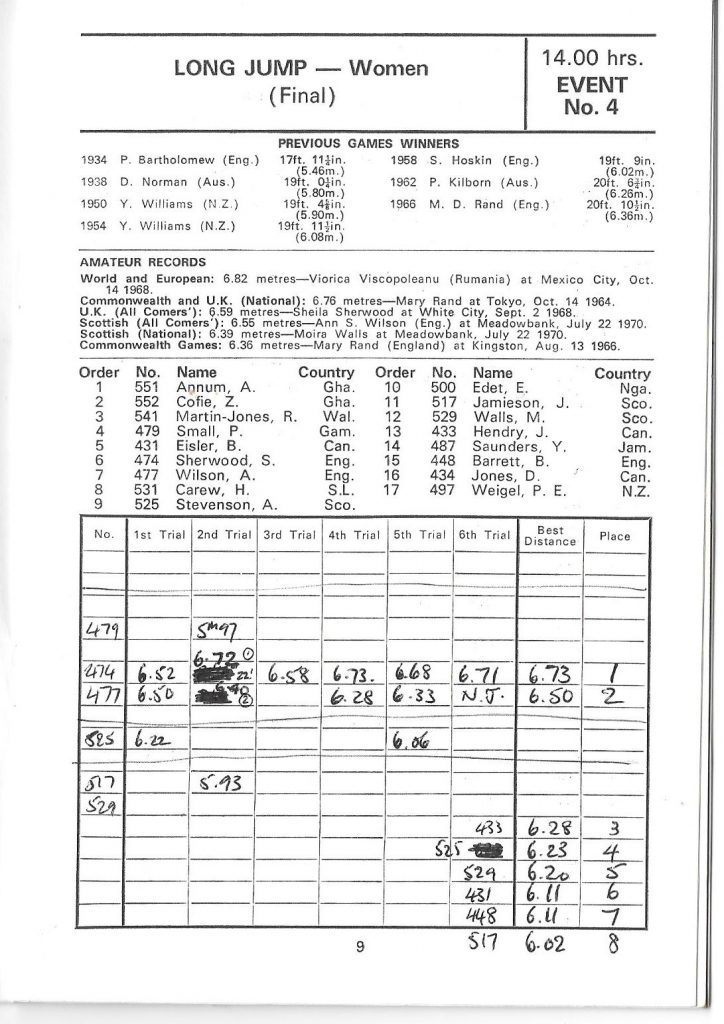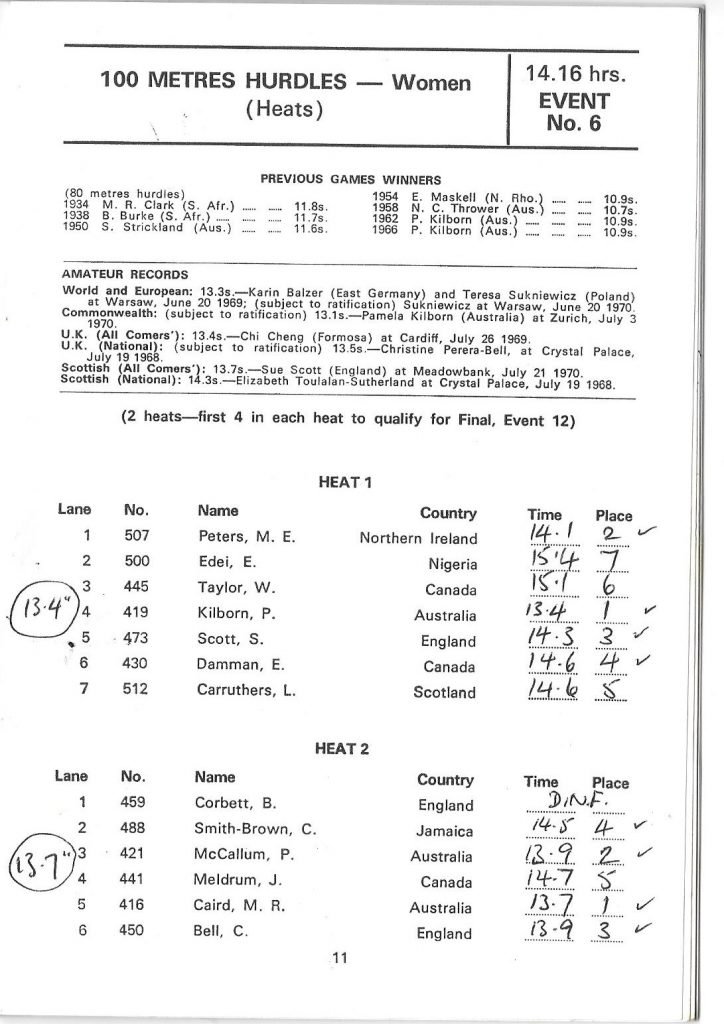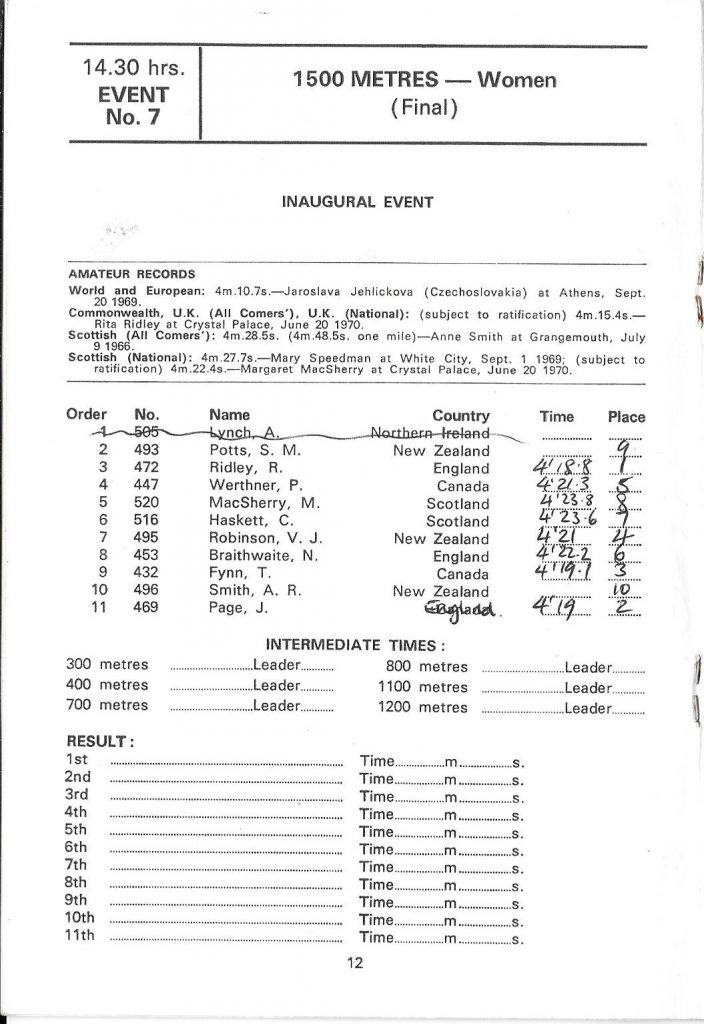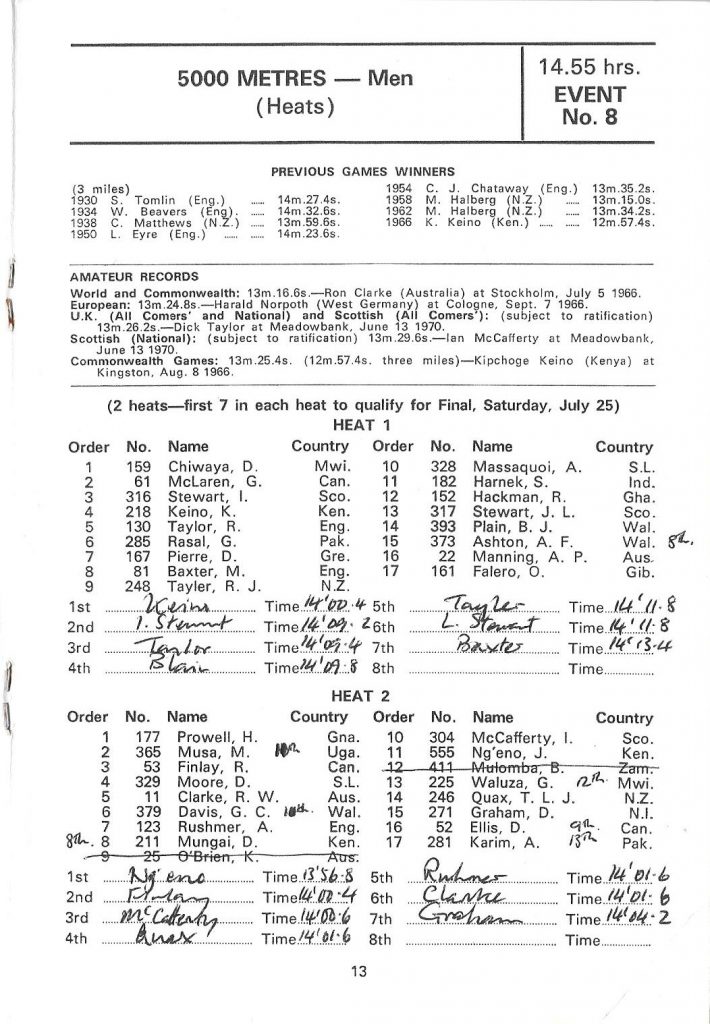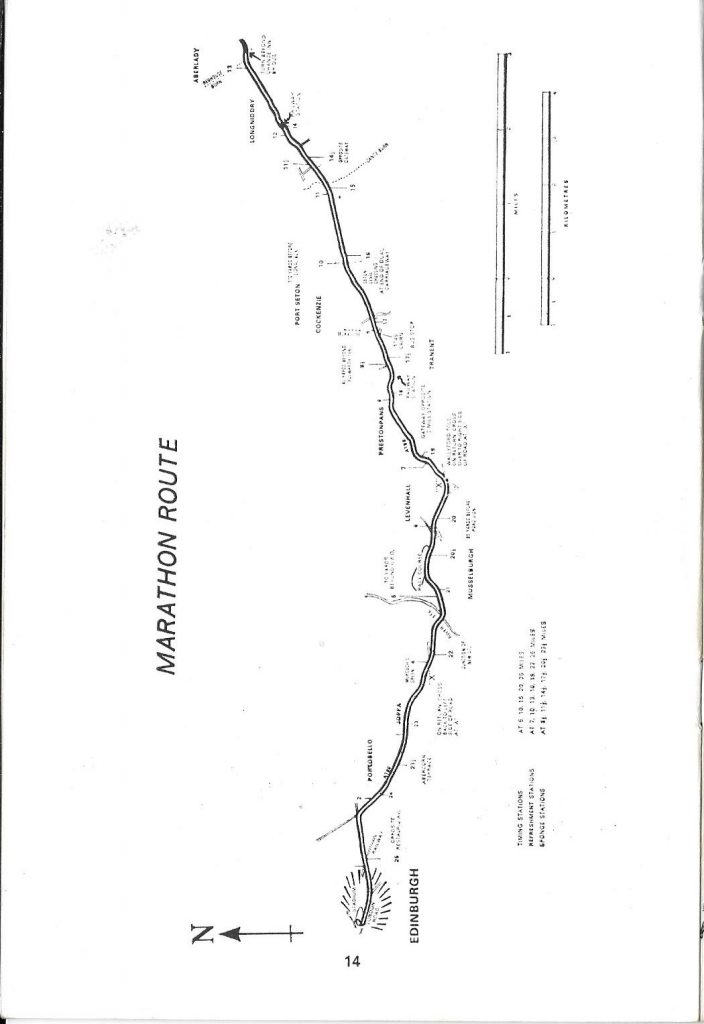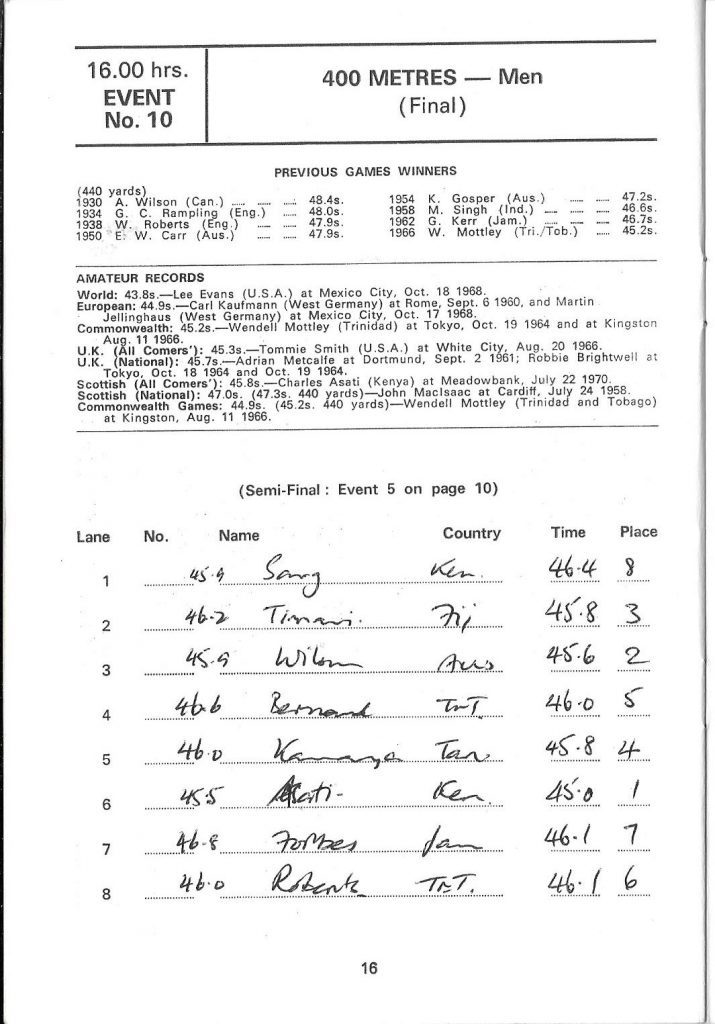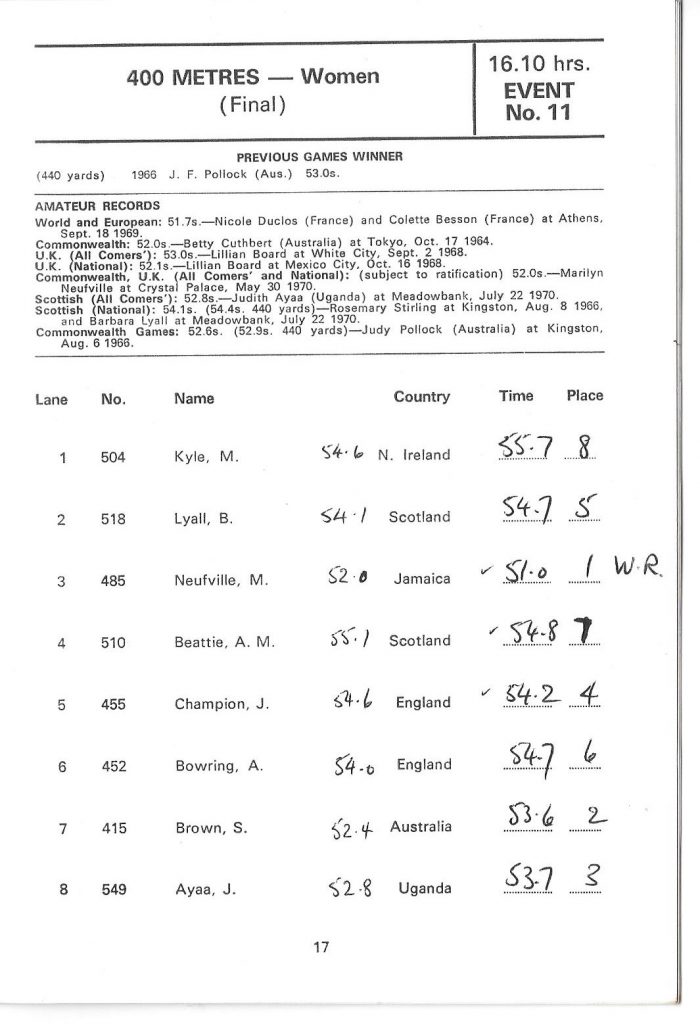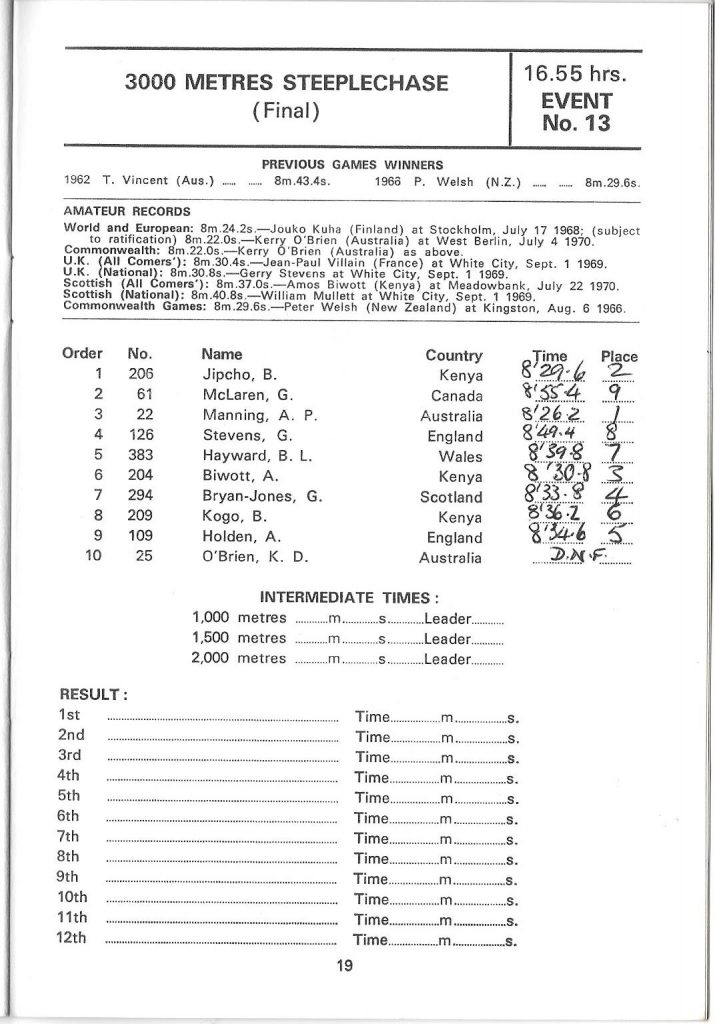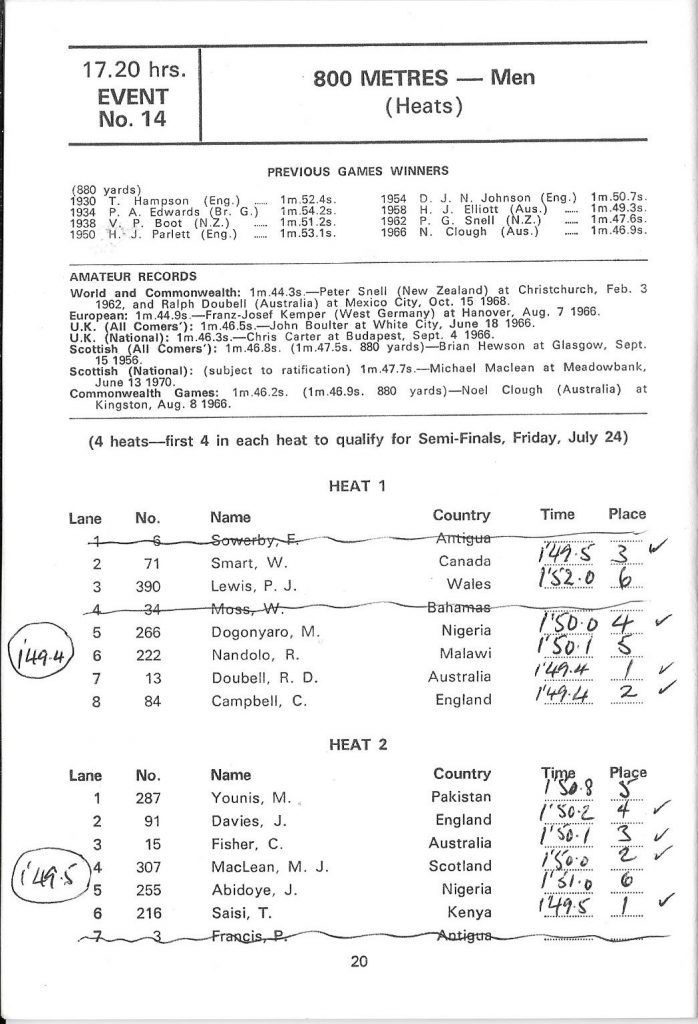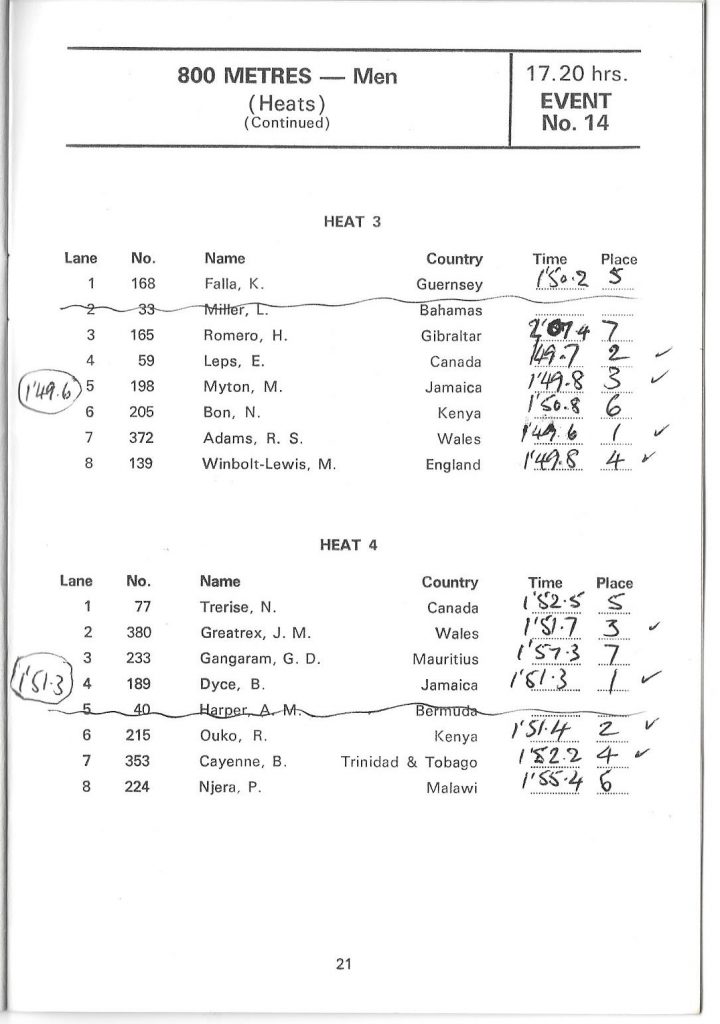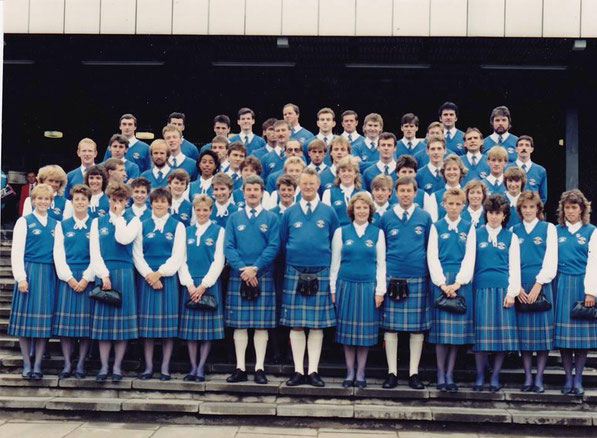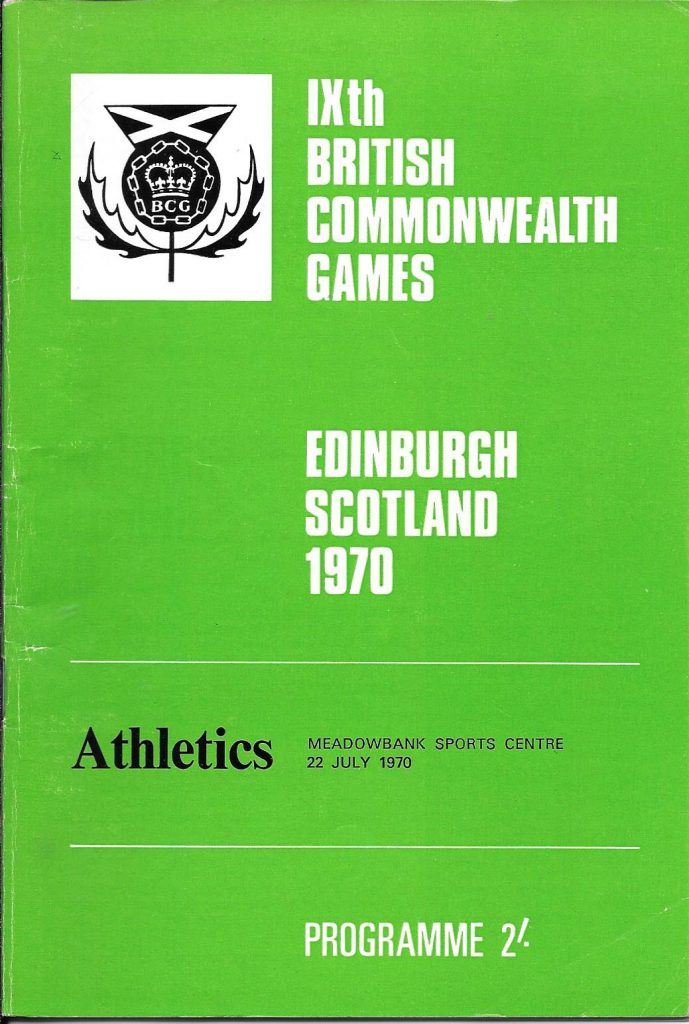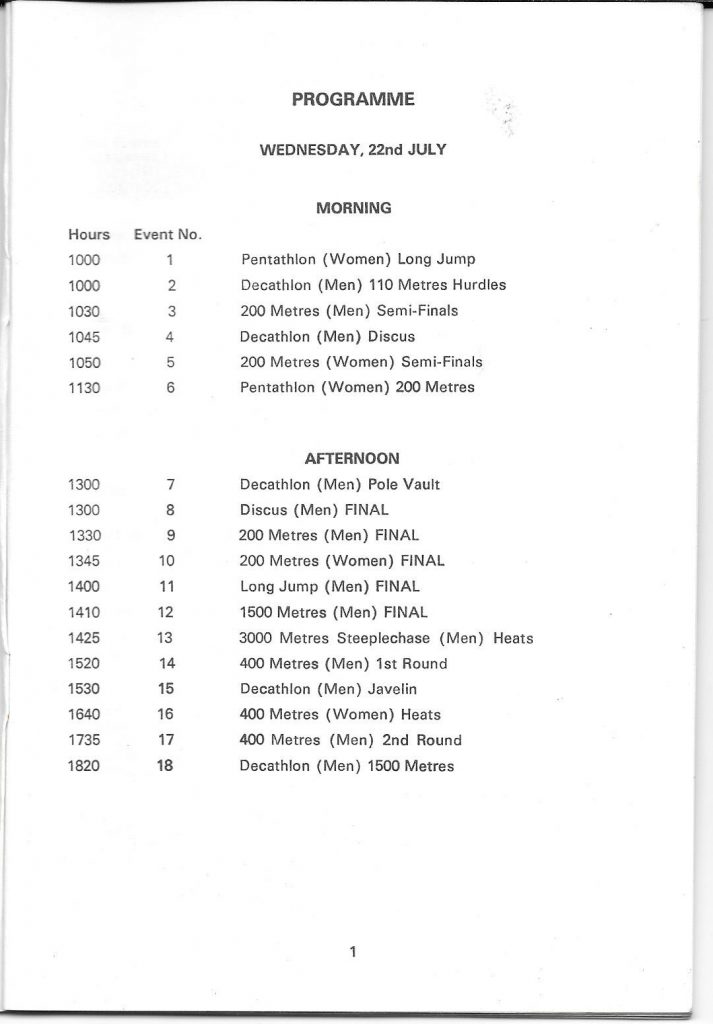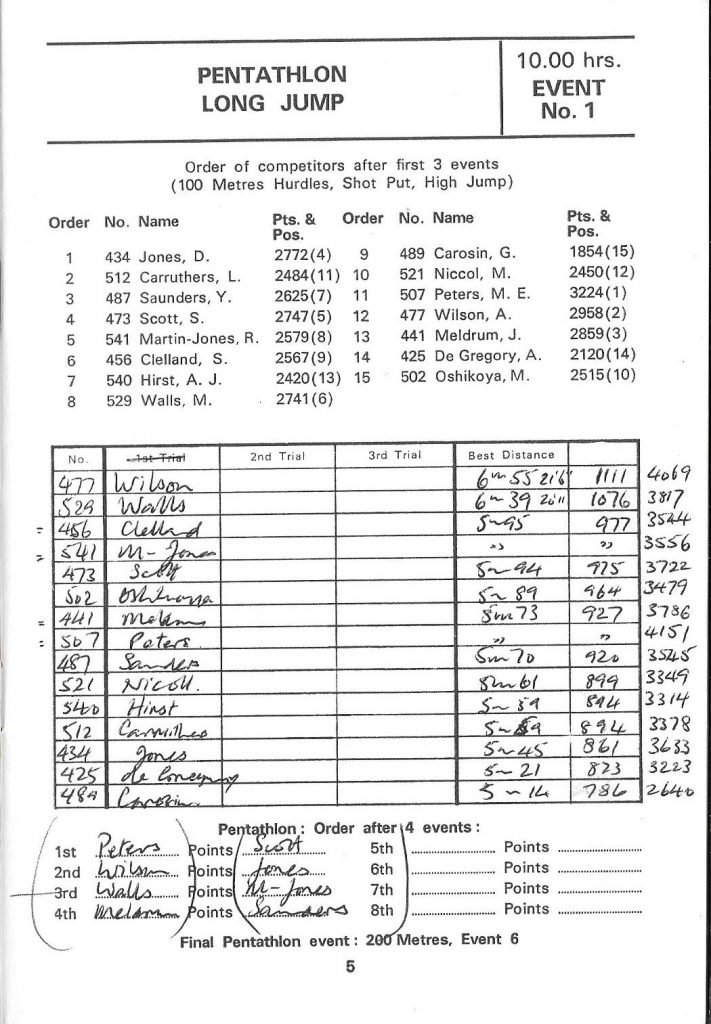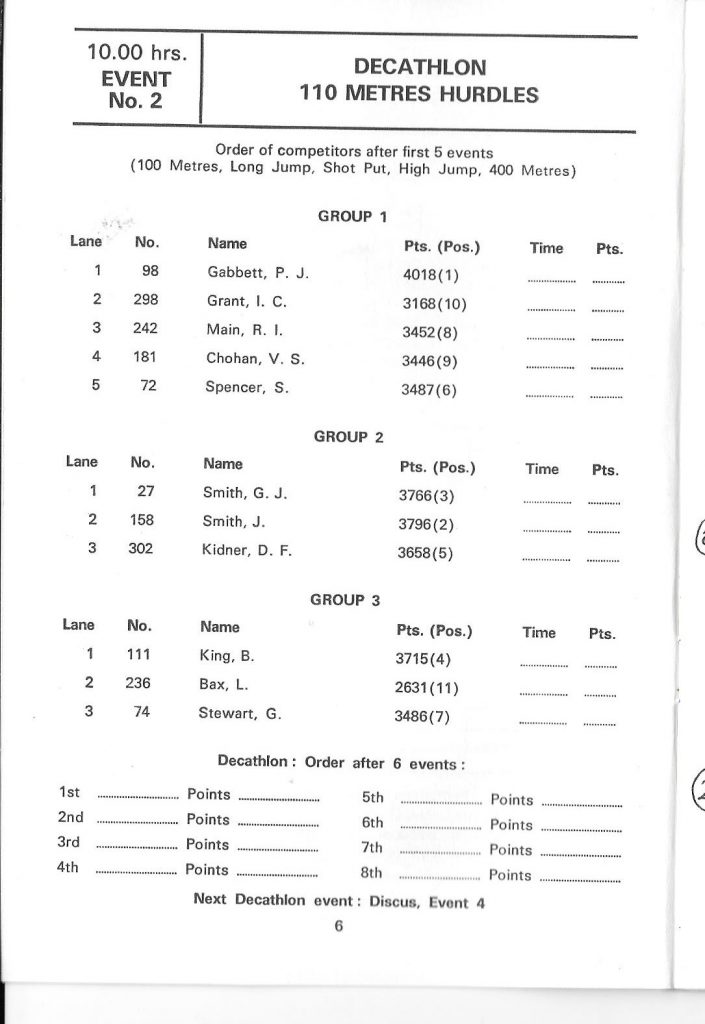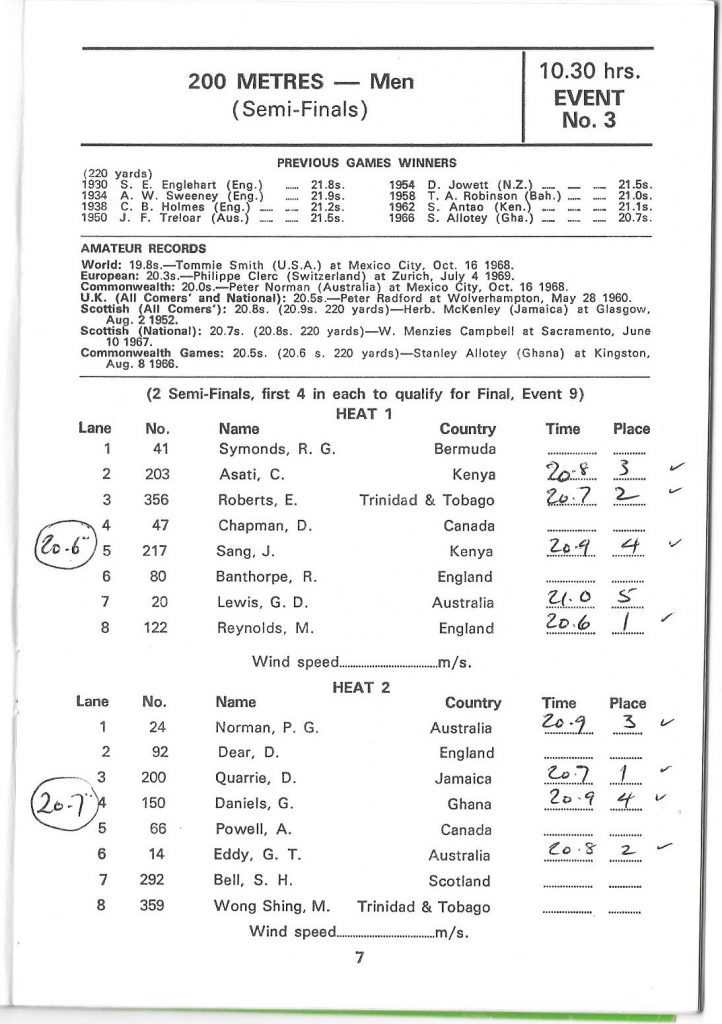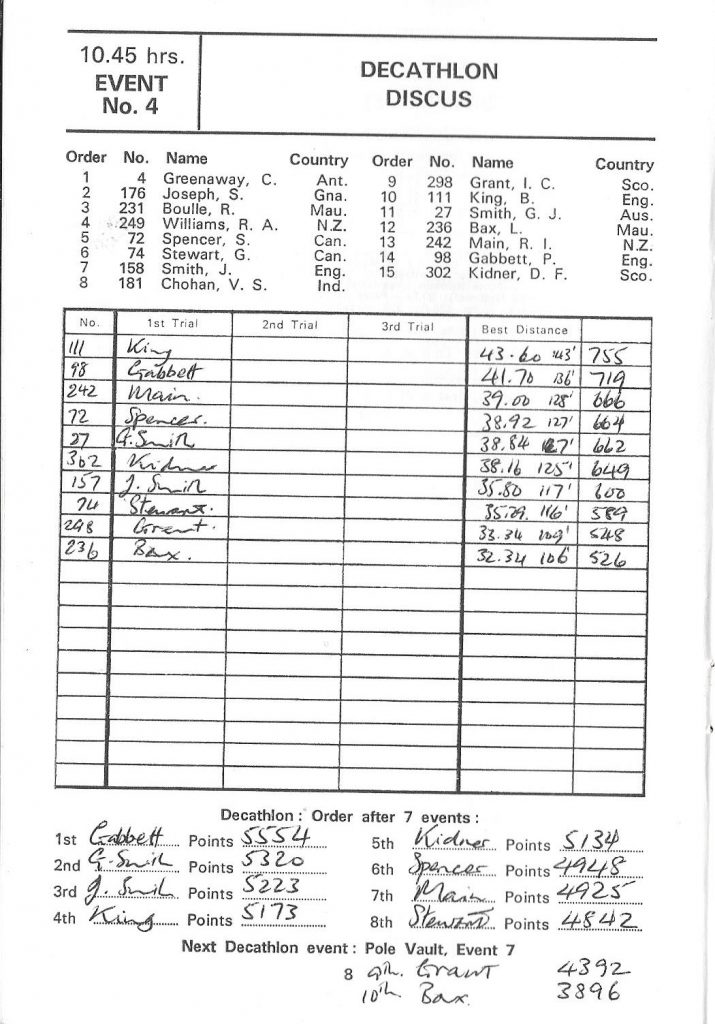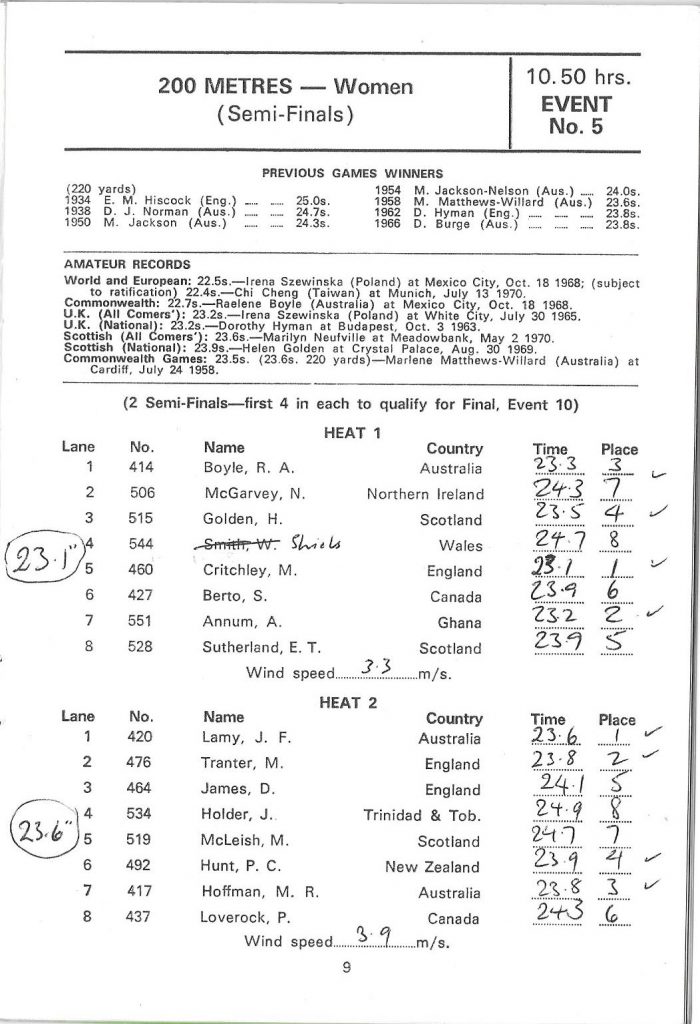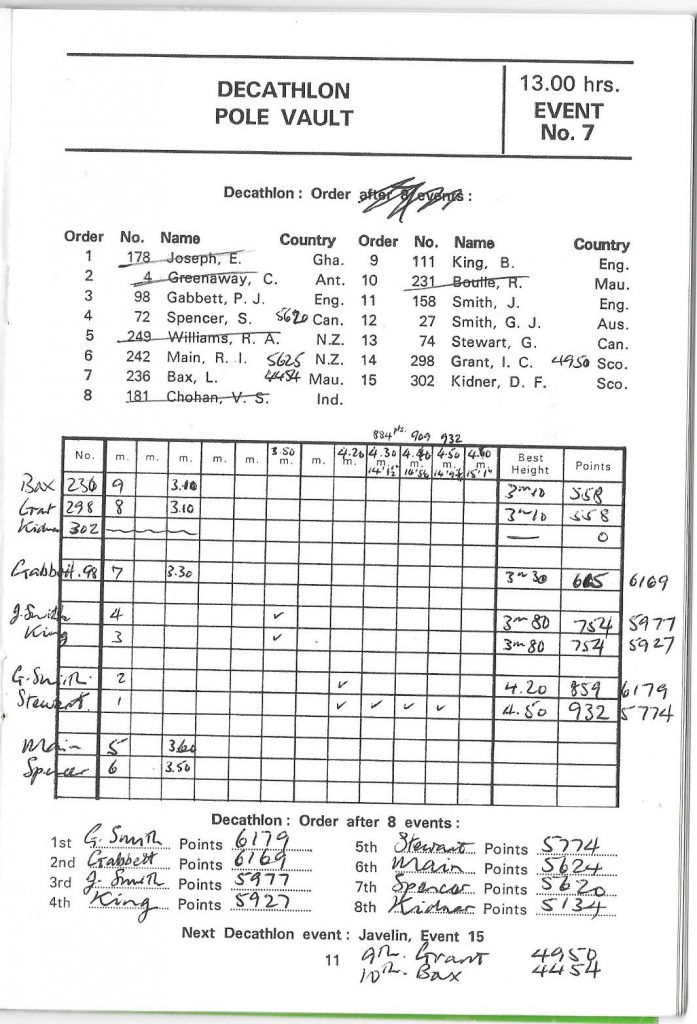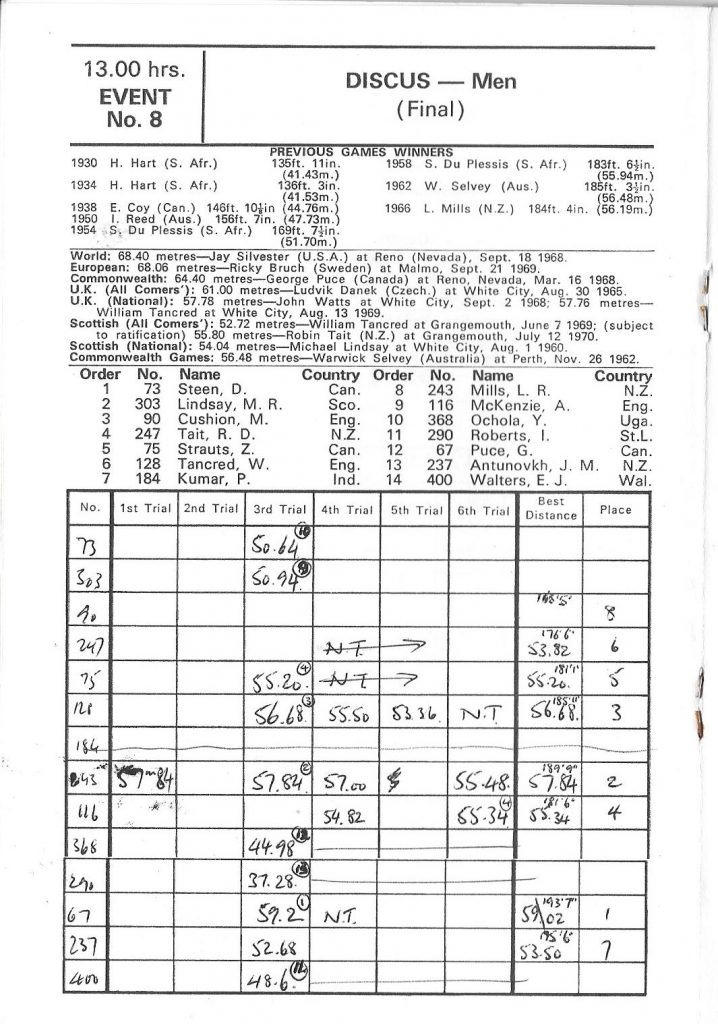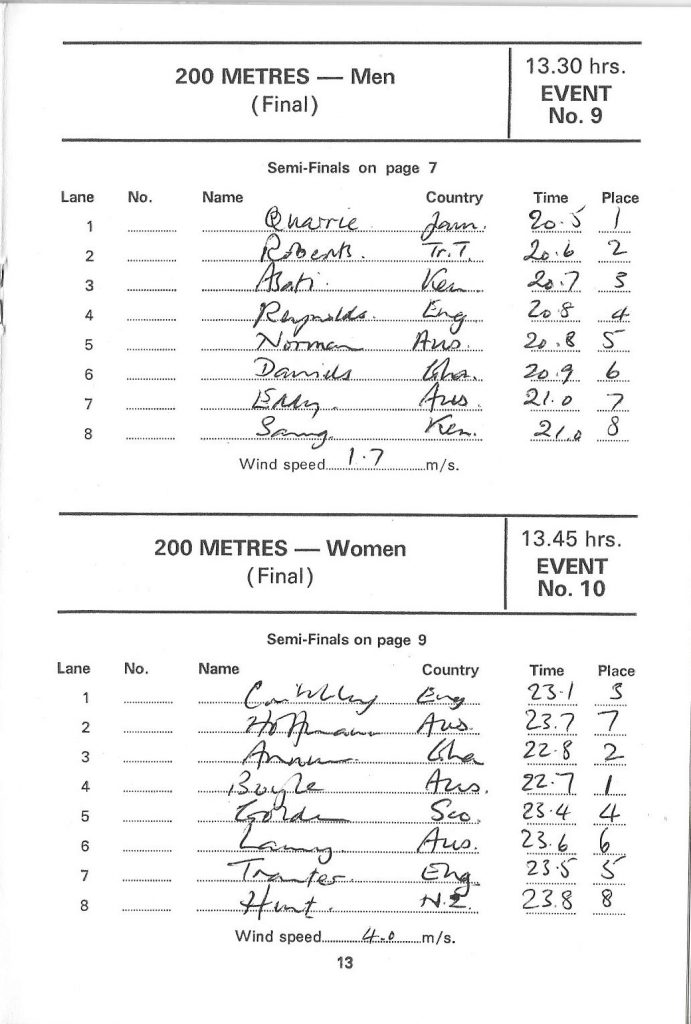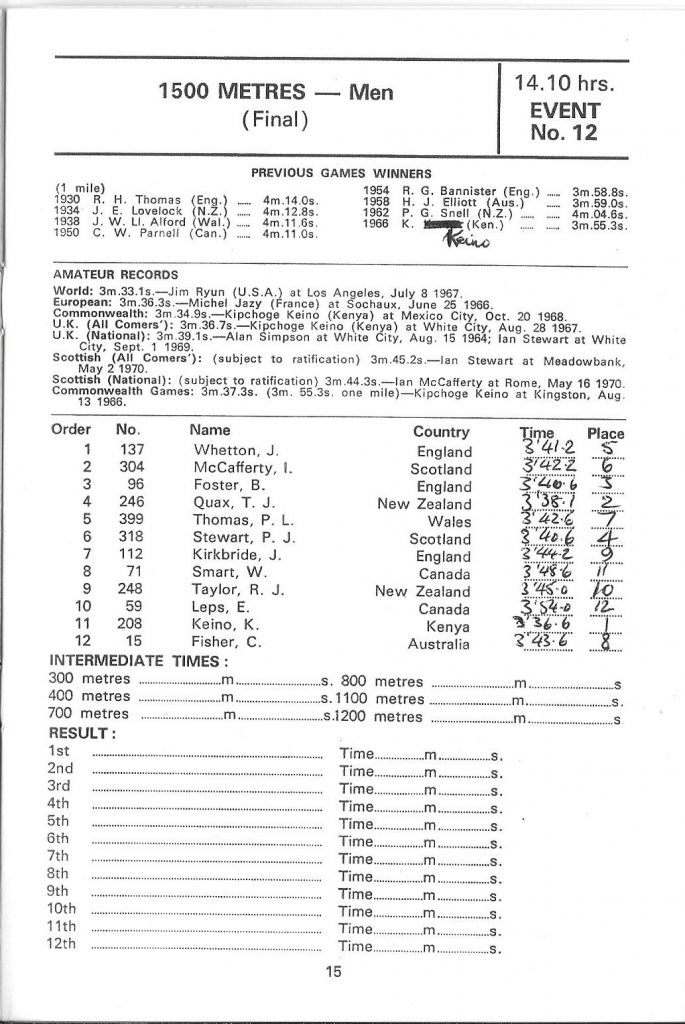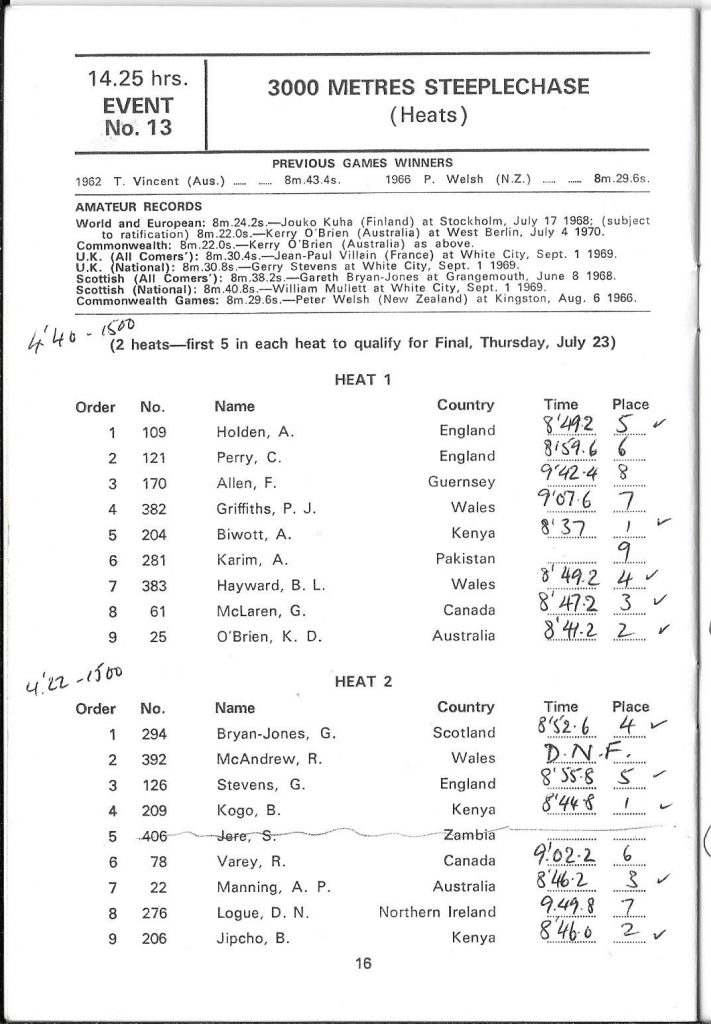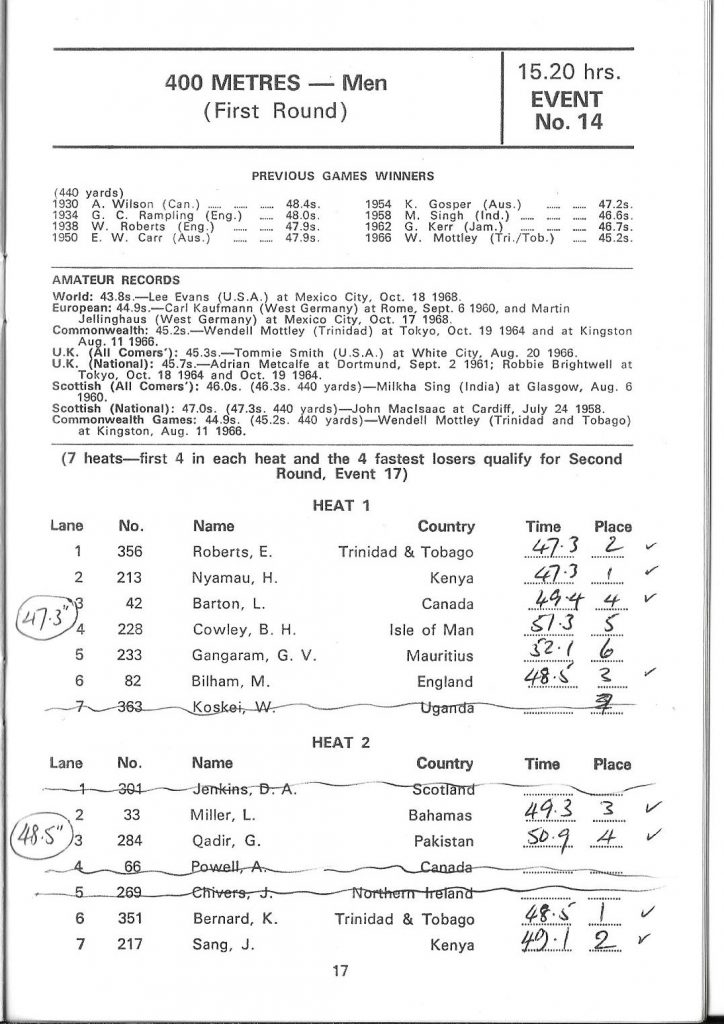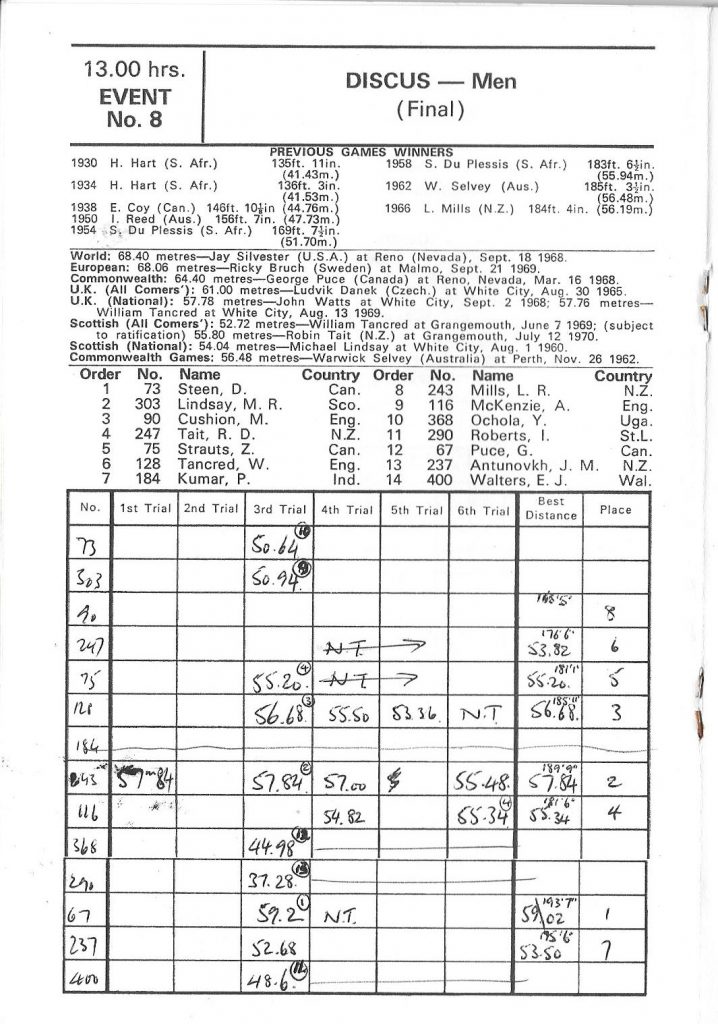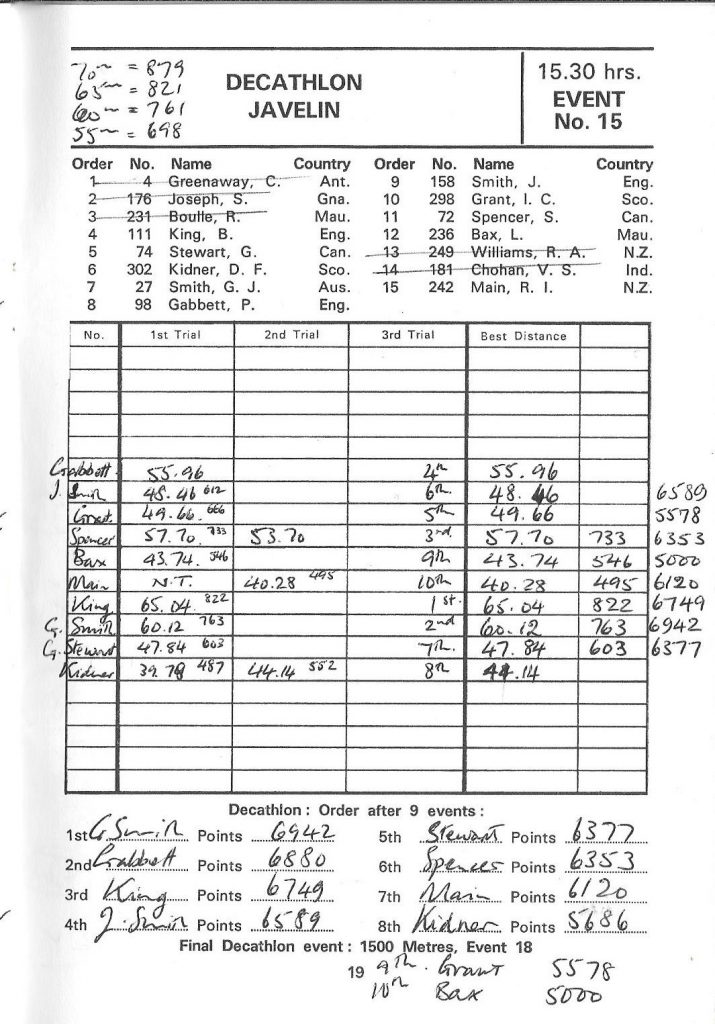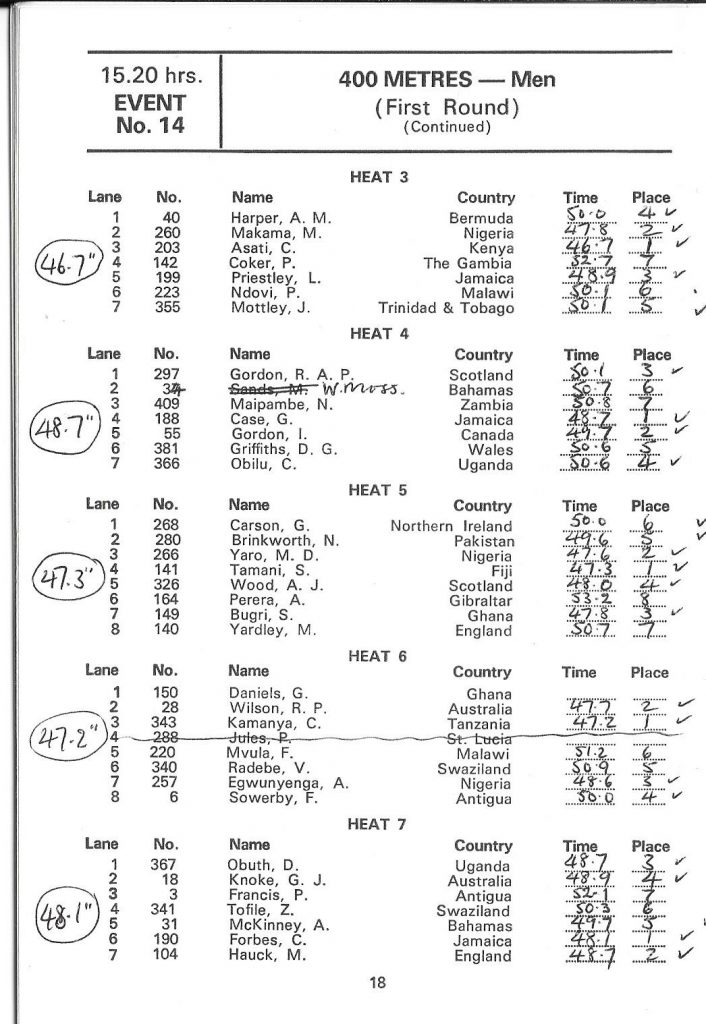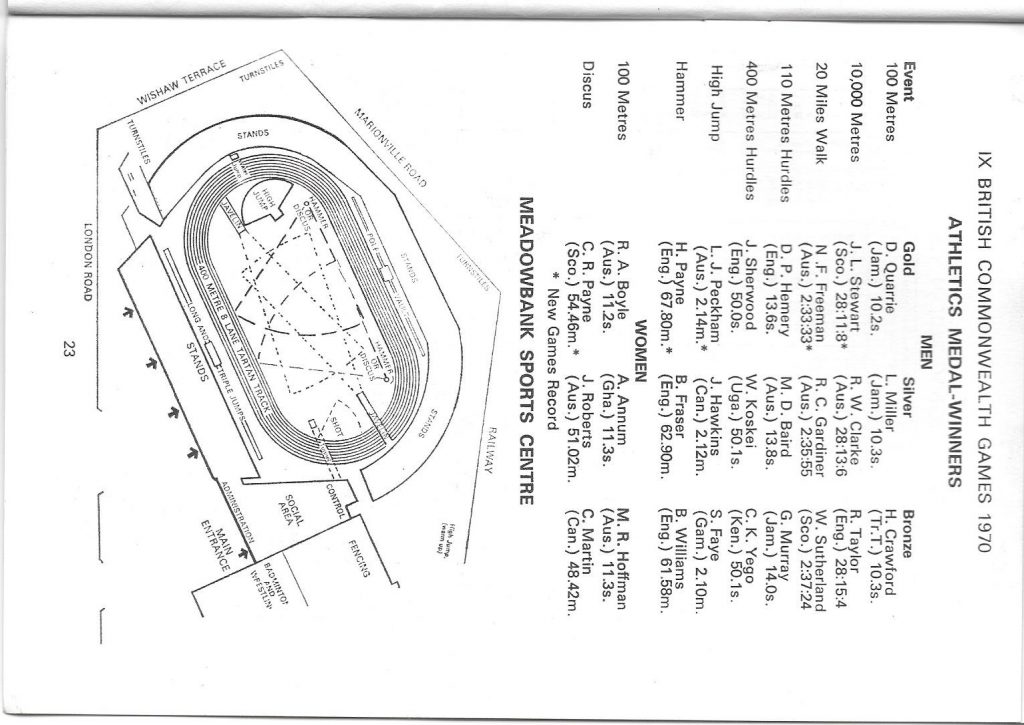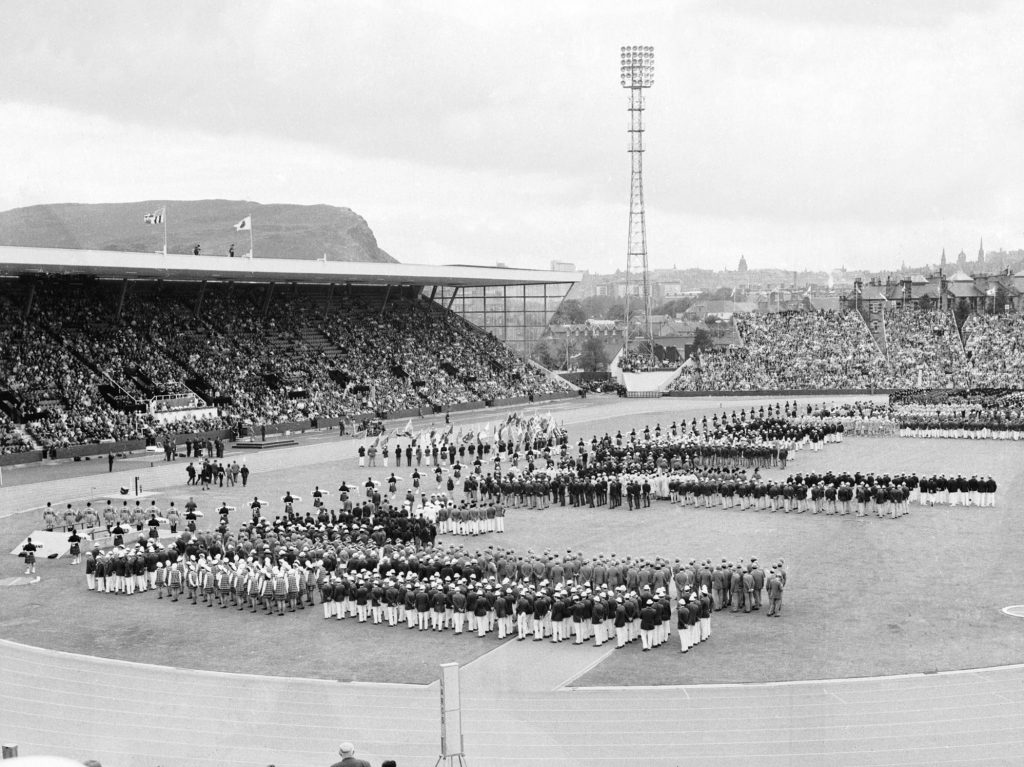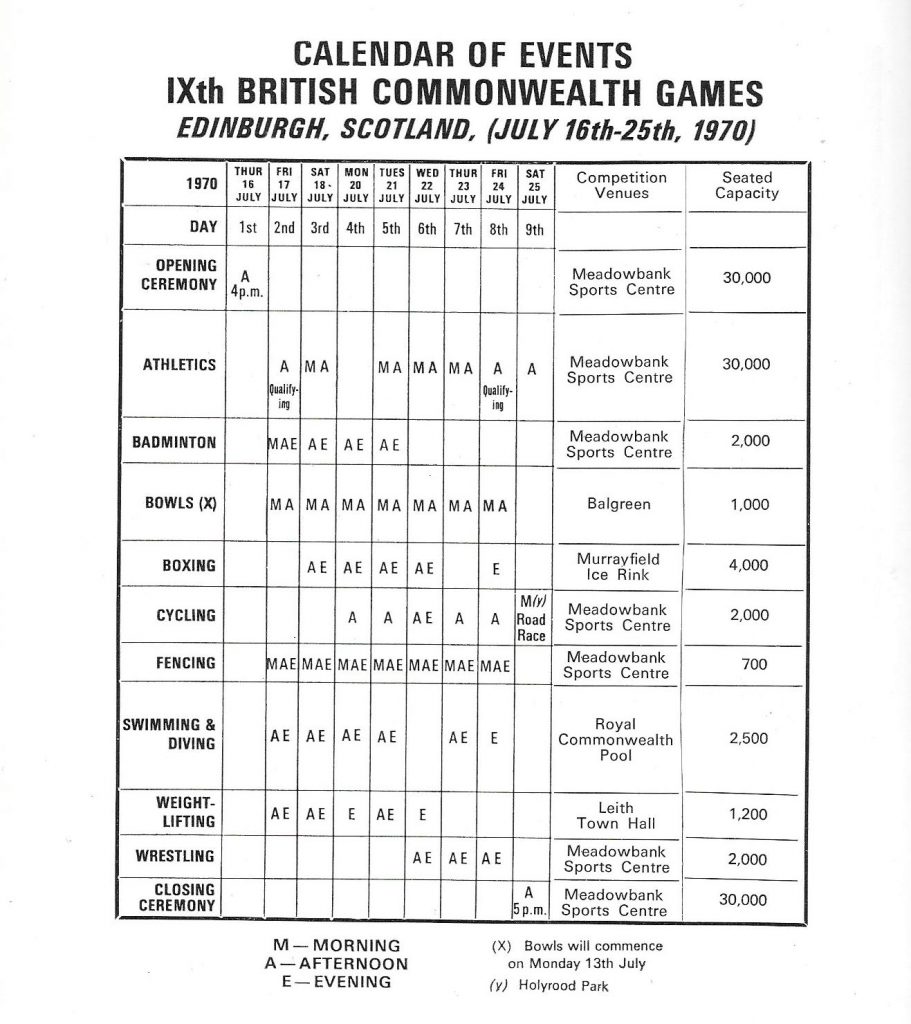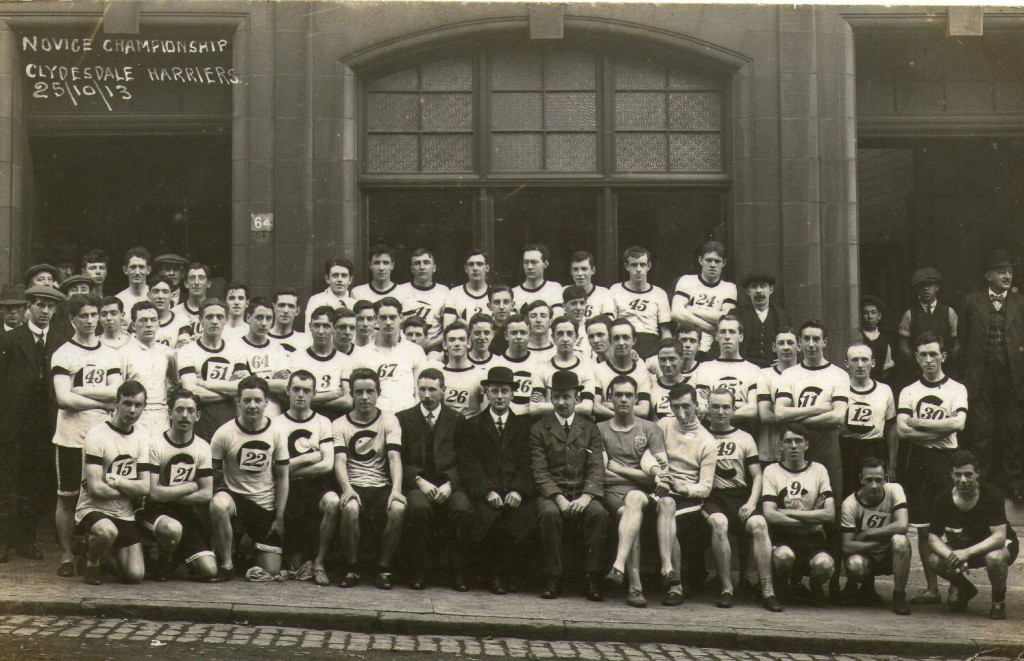
Competitors in the Clydesdale Harriers Club Novice Championship, 1913. How many of these fought in the War
There are probably more books, poems and songs about and dating from this conflict than from any other. The whole country was involved with men who stayed at home were given white feathers of cowardice by strangers in the street, when men were slaughtered in tens of thousands. But most of the information is out there for anyone who really wants the facts, the details. Sportsmen were of course swept up in the jingoism like any others were. The contribution from football is written up in the book about McCrae’s Battalion which was mainly composed of football players from Hearts, Raith Rovers, Falkirk, Hibernian, East Fife and Dunfermline. The contribution from Scottish athletics and harrier clubs is less well known. Individual athletes from just about every club in the land volunteered to play their part in the War. And they did so in great numbers – for instance 30 members of Teviotdale Harriers from a total membership of 140 enlisted. The biggest club in Scotland was Clydesdale and many joined up. Just look at this note from the ‘Evening Times’. A total of 70 club members who had enlisted, and it should be noted that this is not at all an exhaustive list: other club men such as Duncan McPhee enlisted or were conscripted and saw service abroad. We do not know how many of those below died – we know some of them: Wilfred Cramb in 1917, JM Mitchell, also in 1917 and one of the saddest was Harold Servant who had been joint club secretary with Tom Erskine at the start of the war. Servant had been taken prisoner in Salonika, became very ill and died in Holland on the way home on 3rd January, 1919. He had survived the war but died from the epidemic of Spanish flu that swept through the armed forces from September 1018. The flu was a worldwide pandemic and is estimated to have killed 100 million people world wide including 250,000 in Britain where it infected approx a quarter of the British population.
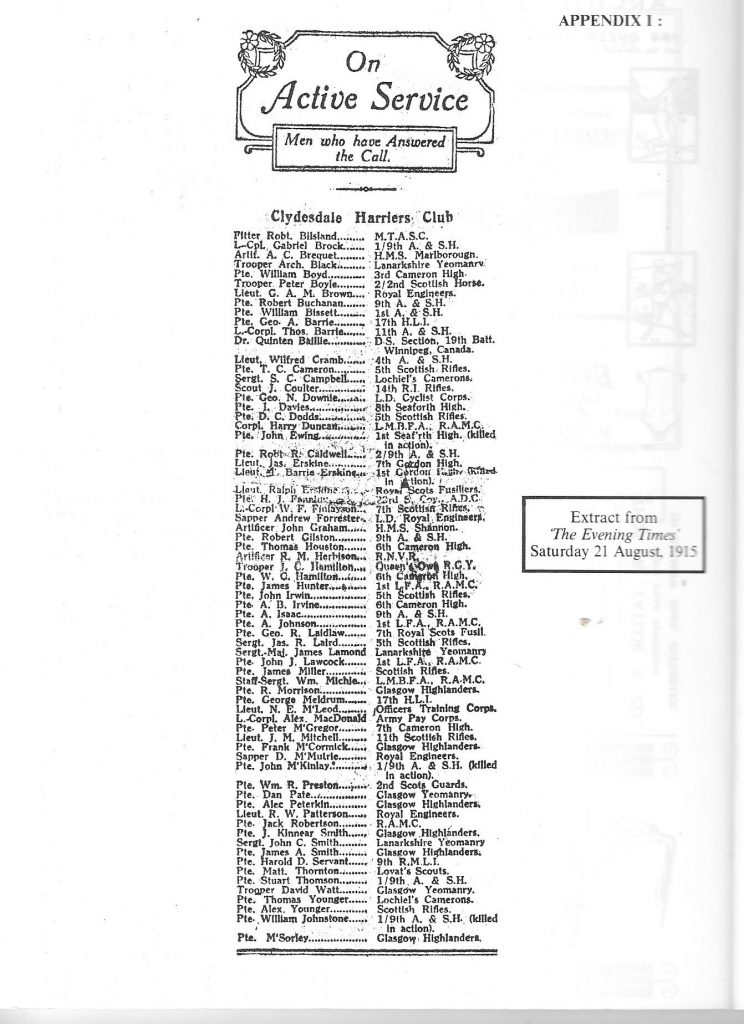
I would like to draw your attention to three names in the middle of the list – Lieutenant James Erskine, 7th Gordon Highlanders, and his two sons, Lieut. Thomas Barrie Erskine, 1st Gordon Highlanders, and Lieut Ralph Erskine, Royal Scots Fusiliers. Note also the date of the list – 21st August 1915 – and then look down the list and note that four of them had already been killed in action, including Tom. The Erskine family tragedy typifies and maybe magnifies the kind of tragedy that befell many a family across the country. After hostilities had broken out, at the Clydesdale Harriers Committee Meeting held on 5th September 1914, the final item on the Agenda was the paragraph: “At this stage in the meeting, and before the election of office bearers for the new season, Mr James Erskine moved the adjournment of the meeting sine die, and also that we recommend to the SCCU that there be no cross-country running meantime. This was duly recorded.”
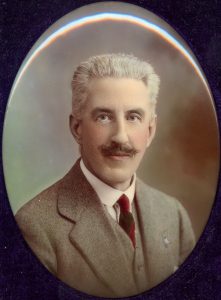
James Erskine
James Erskine grew up in Glasgow and by the age of 16 was working as a stockbroker’s clerk. In 1887 he married Janet Barrie. James and Jenny had 5 children. Their first child, also called James, was born in 1888 but tragically died of pneumonia and peritonitis in 1894 a few days before what would have been his 6th birthday. There followed two more boys, Thomas Barrie Erskine (born 1889) and Ralph (born 1893) before in 1895, they had a daughter, Margaret Strachan Erskine. Sadly, as was commonplace then, Margaret too became an infant mortality statistic, dying of tubercular meningitis the following year. James and Jenny’s final child Nancy was born in 1897, but there was another tragedy to follow. When Nancy was only four, her mother Jenny died of consumption. James was now a widower with three surviving children,– Tommy, Ralph and Nancy.
James was a founder member of Clydesdale Harriers when they started up in May 1885. His business as an insurance salesman was doing well enough to advertise via a full page in the Harriers Handbook. James was on the club committee from the start and in 1888/89 was club secretary and also a District Leader for Number One District (Dennistoun, Camlachie Rutherglen), as well as being on several sub-committees: Business Committee, Advising Board, and Headquarters Representative to the South Lanarkshire Section. He remained secretary until 1890/91 when Andrew Dick took over the position. He did some track running and won prizes – 4 in 1989. He took a step back at this point, probably because of the family situation. James had been born in 1888, Ralph in 1893, Margaret in 1895 and Nancy in 1897.
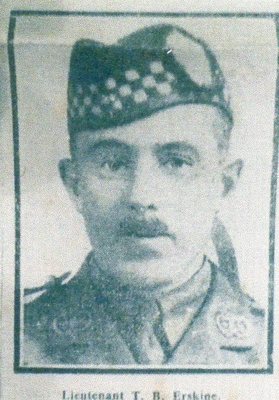
The boys in their turn joined the Harriers with Tom becoming joint club secretary with Harold Servant, who was to die at the end of the War after serving in the RMLI. He was also a runner who ran well in club teams and in August 1914 was a competitor at the Rangers Sports in August in the invitation 1000 yards race.
Ralph was much less of a committee man but an outstanding natural sportsman. Second in the SAAA 880 yards championship twice and world lightweight boxing champion – a title he won in New York – he was a very successful sportsman indeed when the War started.
Tom was in the Gordon Highlanders and kept a diary of his life as a serviceman, and extracts from this can be found at the family website, page
Tommy Erskine’s Diary (22): 24 March 1915 – Back in the trenches – Many Casualties at Neuve Chapelle
from which this short extract has been taken:
“We went back to a support farm on Sunday 4 pm & returned to the firing line last night, so that of the last 10 days we have spent only 2 in billets. There is no prospect of a relief yet – there doesn’t seem to be a battalion to take our place here at present. We go back to reserve farm tomorrow night, and after 2 days there we will return again to the firing line unless the batt is relieved. I hope they’ll give us a longer spell in billets when it does come – we’re ready for a rest now. This is the longest spell in the trenches the batt has had since Ypres.
I have here a paper of 22nd inst. giving another list of casualties of Nueve Chapelle. Our 2nd batt has lost most of its officers including its Colonel. Poor Tommy Letters* the cheery clever fellow of Glasgow University, whom Ralph & I often spoke about, is reported ‘missing, believed killed’. It’s terrible. Capt Halliswell HLI (Highland Light Infantry) is wounded. I wonder if Charlie Mylles got through it. It’s a piece of pure good fortune that our Batt didn’t happen to be in this show. There were 517 casualties among officers alone.
The Germans yesterday put a rifle grenade into the trench on our right, killing 1 officer & wounding 6 men – of the Suffolk Regiment. I hope my grenades have accounted for a good many of the enemy.”
Tommy was a highly regarded by all in the Army and in July 1915 was awarded the Military Cross – the third highest medal available to a serving soldier. He was killed six days later. You can read more about Tommy at this link.
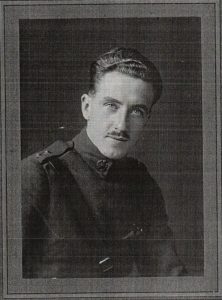
Like Tom, Ralph had been a pupil at Allan Glen’s School as was his brother. He was a gifted athlete and boxer, featherweight boxing champion of the world at age 17. Sporting success reported at the time included the Public Schools’ Boxing Championship of England in 1911, and the Feather-weight Amateur Championship of Scotland in 1912. He also won the European championship at Paris. In May 1911 Ralph sailed to New York for a fight for the (unofficial) Amateur World Featherweight Title. He fought at the famous National Sporting Club on 27th May 1911 and the following day the New York Times reported: “The star of the lot was Ralph Erskine, the 17 year old boy who fights in the 125 pound class. He fought Alfred Roffe, the Canadian champion, and simply toyed with his opponent all through the three rounds. He had all the actions of an experienced performer and the speed of a Jem Driscoll”. He easily outpointed Roffe.” As a runner he won many a race and was twice silver medal winner at the SAAA Championships and ran for Scotland in the triangular international against England and Ireland. When war broke out in 1914 Erskine, a medical student at Glasgow University, was an athletics blue and had served as sports secretary and secretary of the athletics section. On a hiking holiday in Arran with his friend Charles Higgins when war broke out and they immediately headed back to Glasgow to join up. Ralph was given a Commission in the Royal Scots Fusiliers, and, having landed at Boulogne on 9th July 1915, he was promoted to Captain and after some heavy fighting in France, fought in the Battle of Loos (25 September – 18 October 1915). In December 1915 Ralph relinquished the temporary rank of Captain, and joined the Royal Flying Corps, forerunner of the RAF (first spending some time with the Australian Forces Royal Flying Corps, probably for training). After getting his “wings” Ralph returned to France with 66 Squadron of the Royal Flying Corps from 22nd September 1917 as a pilot. He was flying a Sopwith Camel, B6414.
Ralph was killed at the age of 25 when his aircraft was shot down in Northern Italy – the first British airman to fall there. “Force-landed in front line trenches near Flers. Aircraft destroyed by artillery fire.” According to information in a later family letter, he didn’t have a parachute. He was wounded in the leg, but died in captivity on 1 January 1918 and was buried at the British military cemetery in Tezze, near Venice. If youwant to read more about Ralph, follow this link
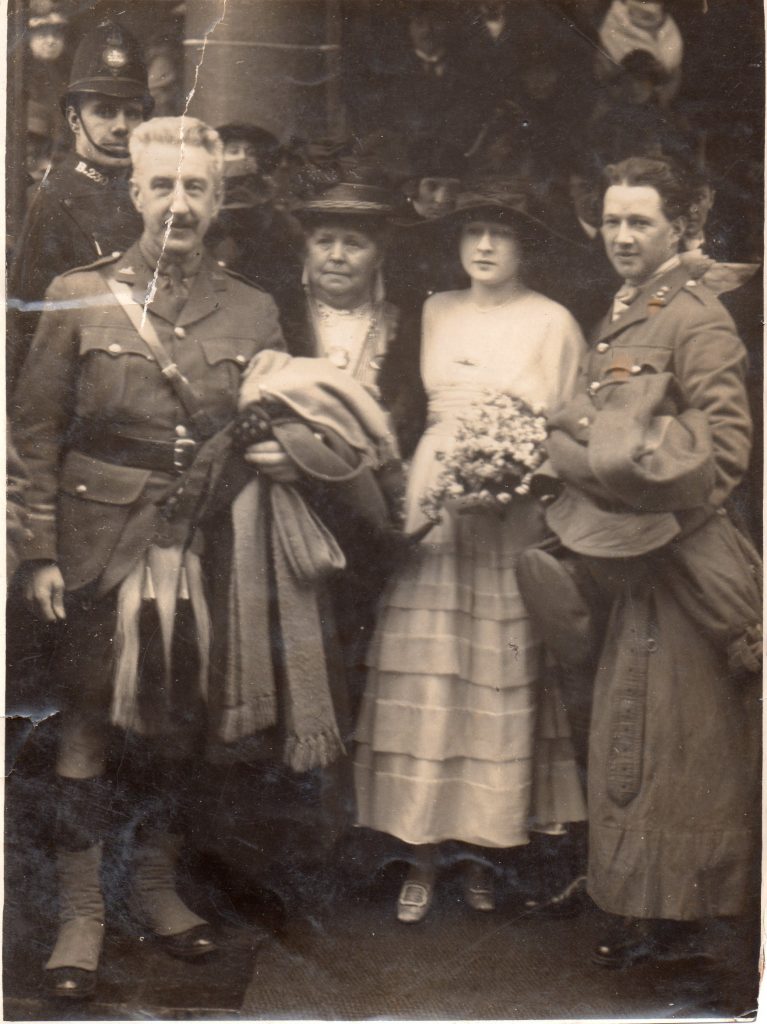
Ralph and Lennie on their wedding day, March 1917
with James Erskine (left)
It was a tragedy the likes of which we can never even imagine for James. His wife and four of his five children had died and to multiply the horror of the situation he had to inform his remaining child, daughter Nancy, and the letter doing so read as follows:
My dear wee Nancy,
I have just received bad news from Lennie’s father. He has been told unofficially that a message has come through Copenhagen stating that a Captain Erskine and another RFC officer (whose name is illegible) were killed and buried together.
I know you will be deeply grieved – what can we do or say.
My heart us sold for Lennie and for you (who both loved him so dearly). I hope you will be able to comfort each other from the depth of your great sorrow. For me – ‘the rest is silence’.
Your always loving
Daddy
*
The Minute of the Clydesdale Harriers Annual General Meeting, the first since James Erskine moved suspension of activities in 1919, read:
“There was a splendid turnout at the annual meeting (adjourned since September 1914) of the Clydesdale Harriers. Owing to illness the club president, Mr William Gardiner, was unable to take the chair, and this duty was undertaken by Mr M.F. Dickson, an ex-president.
“Office Bearers were elected as follows:- Honorary Presidents: MF Dickson, Captain James Erskine, J.C. Lawson and Charles Pennycook. President: William Gardiner. Vice President: Lieut James Lamond; Joint Secretaries: Alexander McGregor and James Findlay; Treasurer: George Reid; Captain: William Ross; Vice Captain: Frank McCormack. It is noteworthy that three of the original members of the club – started 35 years ago – were present at the meeting, and still take an active part in the management of the club.”
James Erskine was present and elected Honorary President. Small Consolation for his massive losses. Nor was the support of athletes for the war restricted to Scotland – all countries provided fit young men for the colours, The Dublin club of Clonliffe Harriers History lists 57 members (four who were KIA) who fought in the War. One of them at Neuve Chappelle (see TB Erskine’s Diary)
When you hear of the sportsmen killed in the War, think by all means of McCrae’s Battalion, but think also of all the Harriers of all clubs who were lost. All are equally deserving of our memories.
